Long-awaited and literally years in the making, Mission Group's new Cyrus CD players are emerging at last. First to appear is the upmarket two-box combination of Discmaster CD transport and Dacmaster D/A converter, reviewed here.
With acombined price of £1800, Discmaster and Dacmaster are already near the top of the tree among UK digital products, but the optional addition of two PSXR auxiliary power supplies at £300 each takes the total price to around £2400.
![Cyrus Discmaster]()
This is well above the original territory of the Cyrus brand, although the cost of Cyrus amplification has also risen somewhat, with the current remote-control Cyrus 3 amplifier at £500 (£800 if aPSXR is added). A less expensive integrated CD player, the Cyrus DAD7, will appear later in the year, and is expected to retail at under £ 900.
Cyrus products are still built into those neat die-cast cases, which inte- grate the enclosure and heatsink fins so well. However, anew profile has been tooled for the largely push-but- ton fascias: gone are the old rotary switches and controls.
Top loader cdplayer
The Discmaster transport is a top loader, its hinged acrylic cover deeply tinted to exclude ambient light, the finish being ahard coating of mineral oxides which gives a high scratch resistance. The cover is operated manually, but an electromagnetic lift raises it the first couple of centimetres from closed. A small puck clamps the disc in place on the transport hub, which contains the clamping magnet.
A slightly recessed, pale green back-lit LCD display is fitted to the front panel. It shows approximate track position by a semi-circular bar graph while indications of track number and timings are also given. Index points may be accessed. The track memory will hold up to 20, and can also be programmed for chosen phase per track, be it absolute or inverted. This is not along term FT'S-type memory, however, and would need setting for each disc played. The phase setting only works in combination with the Dacmaster.
![Cyrus Discmaster]()
All the usual facilities are present on the remote handset, including a 10-key numeric pad and astandby mode for the unit. The display can be switched off, with the potential for better sound. On the rear panel, along with the two-pin IEC mains socket (which will also take three pin cords) there are RCA phono jack digital data outputs. A five-pin DIN link is provided for the signalling and for the phase lock system linking Discmaster and Dacmaster. Two further jacks are provided for the Mission Cyrus-bus system remote control, and may be linked through to further system-remote products. The company has already prototyped an elegant, futuristic system remote commander. Finally, there is the dedicated five- pin socket for the PSX auxiliary sup- ply connection.
Philips CDM9 Pro cdmechanism
Discmaster is based on the Philips CDM-9 Pro mechanism, with its cast alloy chassis and the low noise Hall motor option. But Henry Azima and his design team have plunged in at the deep end: instead of building on standard components such as the 'CD Engine' kit, they have designed a unique, highly compact printed circuit board which integrates all the major system functions, transport control, microprocessor, master crystal and SPDIF generation.
This solidly-mounted board also forms the chassis for the transport's own mountings. The flexi ribbon cabling from the vibration-isolated transport is looped neatly to this board via ashort path. Star grounding patterns are evident, unusual at the high frequencies involved in such a board as this (multi-layer types with large low impedance ground and supply planes are the norm); star grounding methods are also seen in the Cyrus Dacmaster, while their worth in analogue circuits is undisputed.
![Cyrus Discmaster]()
When the Discmaster and Dacmaster are linked via the preferred AES/EBU balanced connection, this is run at afull 5V to maximise signal-to-noise ratio and help reject any residual hum which may exist between the two chassis.
Sound quality
Several audio systems were tried with this player, since the combination showed a tonal character which favoured some at the expense of oth-ers. For example, during preliminary trials a false impression was gained when the Cyrus CDP appeared to compensate for a minor flaw in system balance, particularly when directly compared with an inferior player.
With some other systems the vote went the other way, moving the Cyrus rating from the threshold of the audiophile class down to the middle of the quality sector. There was much to do, since the listening tests had to cover transport and DAC individually and in com-bination, with and without phase-lock, in coax mode and AES/EBU as well as with or without one or two PSX supplies.
References included the Audio Synthesis DAX, the Orelle DA180 and the QED Digit Reference decoders, Meridian 200 and PS Audio Lambda transports, and the trusty Accuphase DP-70V player.
![Cyrus Discmaster]()
The base system comprised Epos ES11 and/or Spendor SP2/3 speakers, driven by a Naim NAP250 which was fed via an Audio Synthesis Passion. At a higher level a Conrad Johnson PF21 pre-amp was used with Meridian 605 monoblocks and Monitor Audio Studio 50s. It was also tried with the Wilson WATT 3/Puppy 2 speakers bi-amped with Krell KSA-200S and KSA-100S amplifiers, using a Krell KRC-2S control unit in all-balanced mode.
Another review system comprised the Apogee Mini Grand, also with the Krell electronics listed above. Assessed as a complete player with optimised connections (phase lock) but no PSX and placed on the suggested Isoplat, the design was clearly of considerable quality. It was also fascinating to hear something of a tonal character which I would associate with the popular but now discontinued Cyrus 2 integrated amplifier.
On the plus side, this sound was projected well and had good immediacy and presence. It also possessed precise, almost highlighted, transients delivering firm punchy bass and excellent focus. High-level detail also reached a very good standard.
On the debit side, there was a suggestion of a lack of ease about the sound; listeners' comments included 'it was trying too hard', 'high feed-back,' 'uptight.' Out on its own this was hard to pin down, but became evident when comparing with the DAX for example.
There was also a hint of electronic 'hardness', a for-wardness to the lower treble and upper mid which could subjectively enhance definition and impact, but could also shift the tonal balance. For the Monitor Audio Studio 50 speakers this was no problem at all, but the Apogee and Wilson systems neither favoured nor needed this shift in tonal balance.
Subjective depth was also something of a variable. Depending on the system, and the listener, and to some extent the programme type and quality, the comments for image depth ranged from very good' to Sust average.' I fear that this is going to bring more divergence of opinion than usual among reviewers, dealers and prospective purchasers.
Comparison with the (now discontinued) Accuphase DP-70V as an upper level reference proved illuminating. Even with the Cyrus combination in its optimum double PSX state of tune, the old Accuphase showed tighter, more articulate bass, better pace and significantly more expressive dynamics. Of course, it was more than twice the cost of the Cyrus system. On the other hand, despite a slight loss of extreme sparkle and air in the high treble, the purity and lack of grain or sibilance was superior for the Cyrus, even if not quite in the Audio Synthesis DAX class yet. For the sweetest mid sound from the Discmaster/Dacmaster, I suggest using van den Hul The First cable for the digital link and foregoing the benefits of phase lock. Likewise, The First helps to restore a more neutral balance when used for the analogue signal cables.
![Cyrus Discmaster]()
On my usual subjective rating, the numeric listening-test score was 18 marks, directly comparable with the better UK decoders at this price level. The addition of a PSX to the transport provided a subtle benefit. The sound was a little more confi-dent, with better reach into the low bass. Less 'grain' was heard, as if some jitter reduction had occurred, while the greater bass weight, or otherwise, also gave the impression of a slower, more deliberate pace. It was fascinating to discover that adding a second PSX, this time to the DAC, gave more of the same, but with an additional, welcome bonus. Here the PSX improved dynamics, stereo focus, detail and bass definition. Good crispness was present over the whole range, and the feeling of space and ambience was enhanced, as if the noise floor had been lowered. On the pace and rhythm side, it remained unexceptional, a little above average.
Taking into account the differences of taste and opinion among listeners the double PSX combination lifted the score to 20 on my scale. Used with an alternative transport, for example the now discontinued Meridian 200, the DAC sound was not quite as high in definition in the treble but, conversely, some aspects such as stereo perspectives were more convincing and the sense of pace was improved.
Conclusion
With its clean visual presentation and a well-executed top loading arrangement (but don't lose the disc clamp!) the Discmaster showed much thoughtful design. It worked just fine as a stand-alone transport with AES EBU and coaxial output facili-ties, but its performance could be moderately enhanced by adding a second power supply in the form of a PSX. This is so easy to do that a dealer will able to arrange a demonstration before purchase.
The Discmaster CD operating systems worked well enough, it a little below that possible for the technology. Often such differences are due to the control codes and Mission may well have used a programme which favoured sound quality above track handling. While the display was easy on the eye, I didn't find it either very readable or informative at a distance.
A qualified welcome for the new Cyrus player.
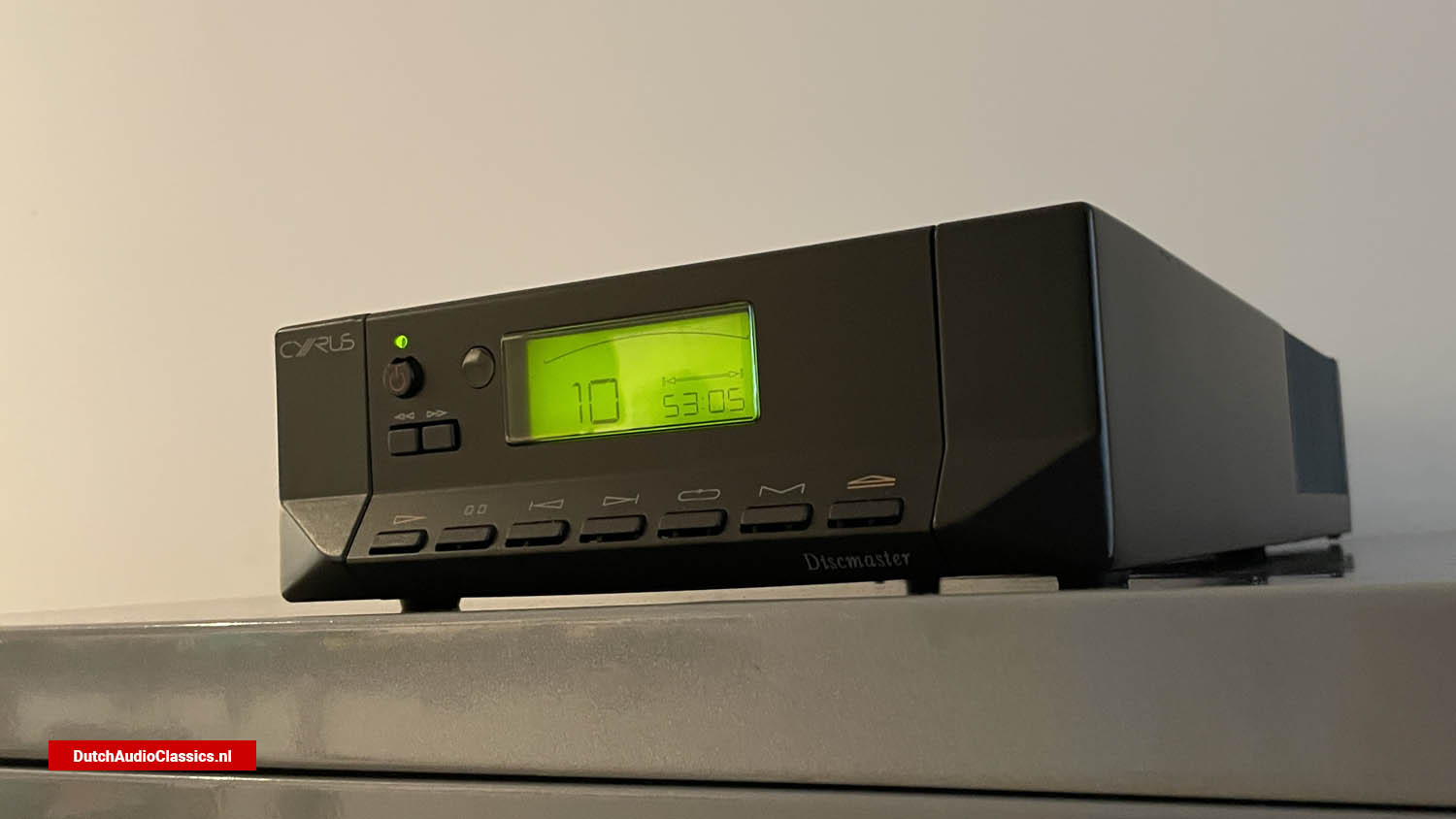
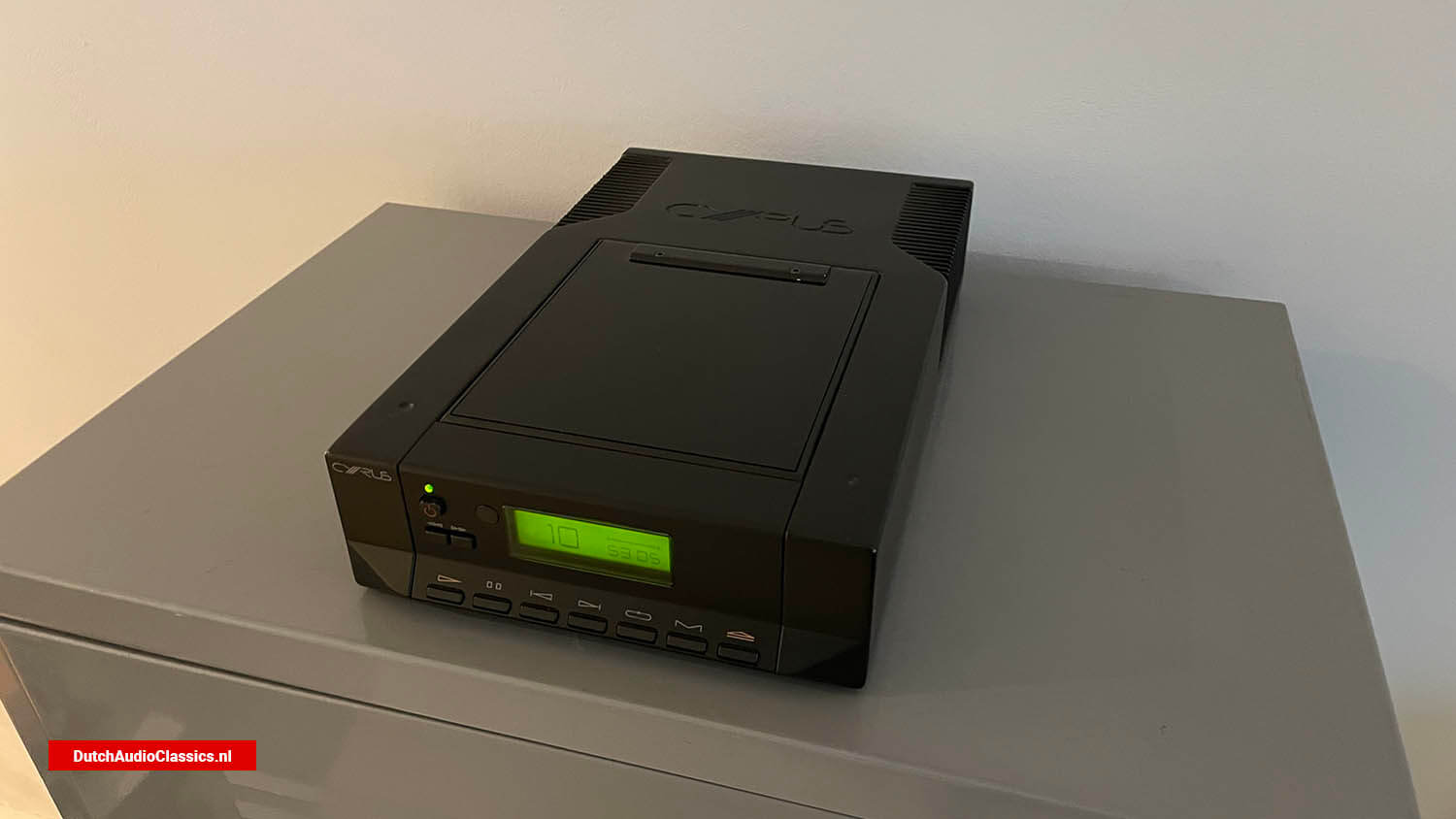

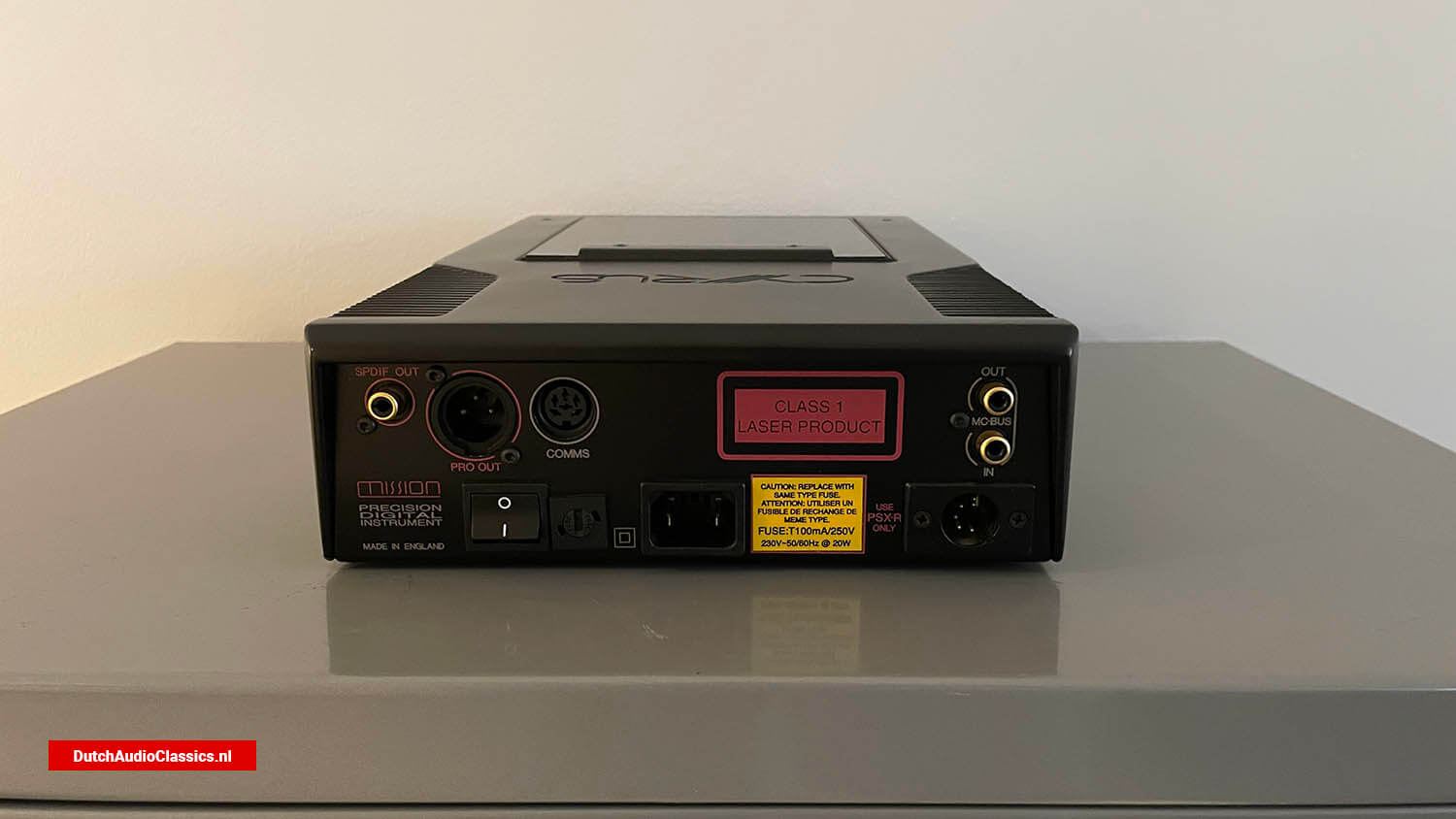
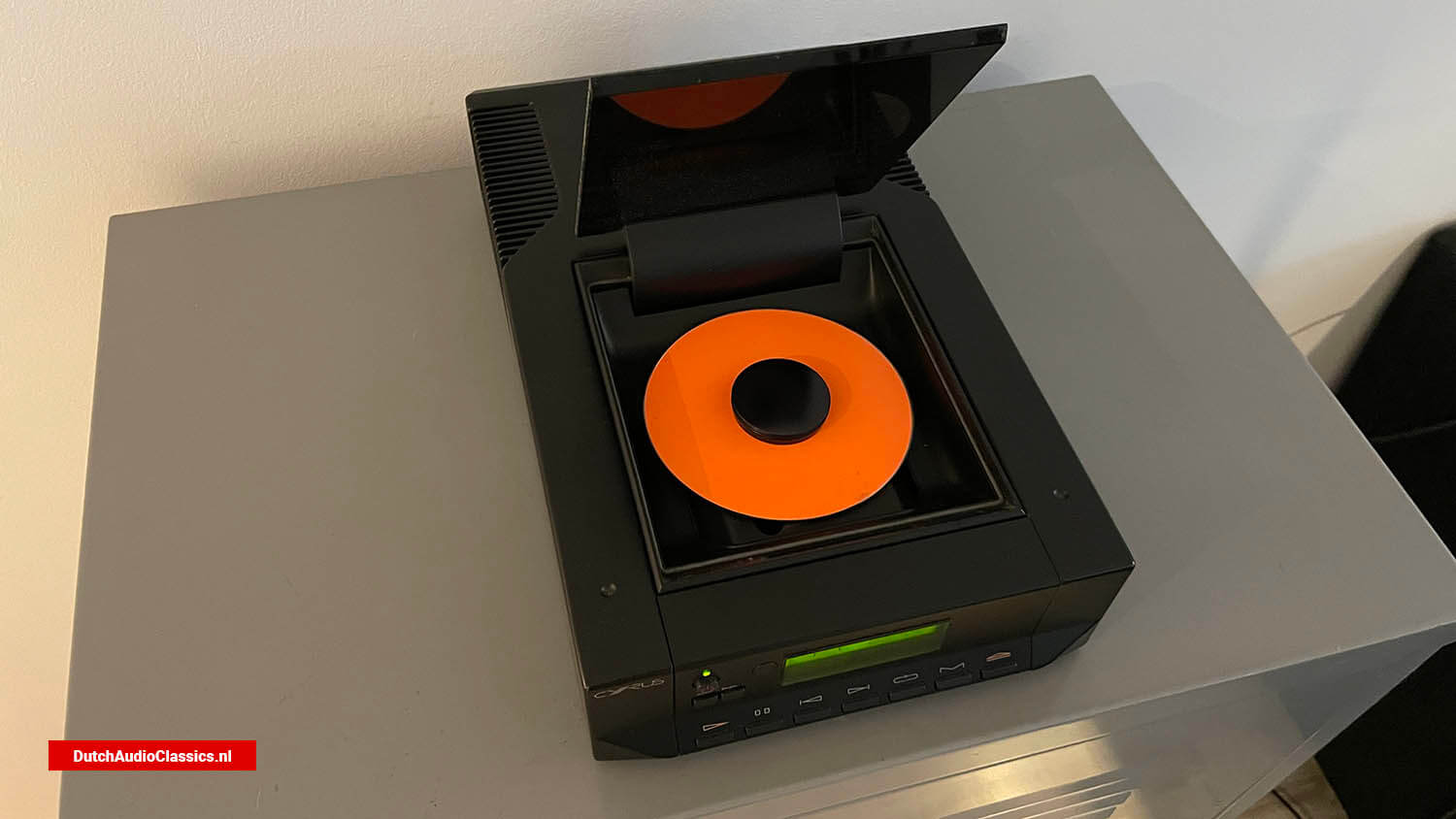



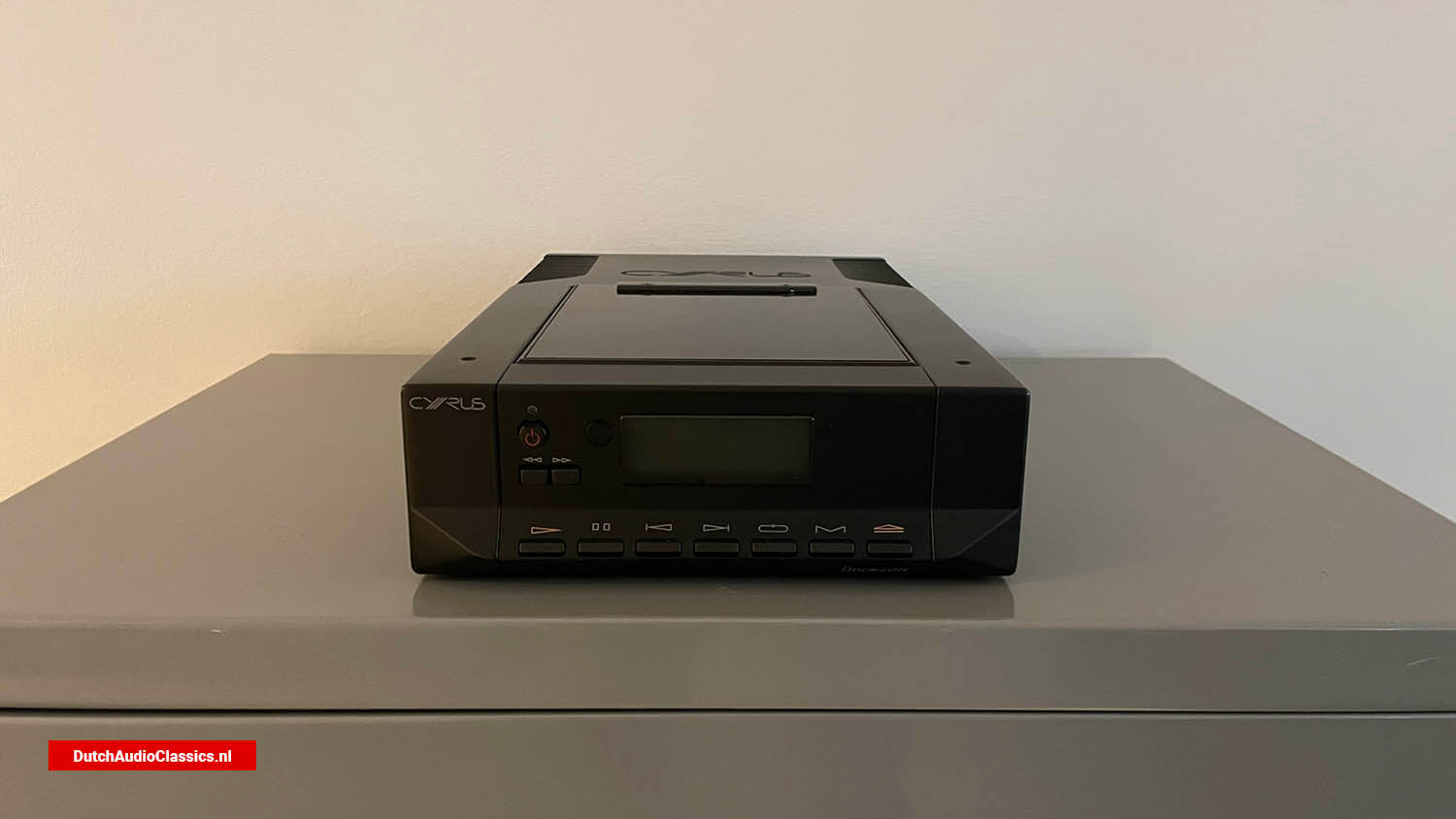
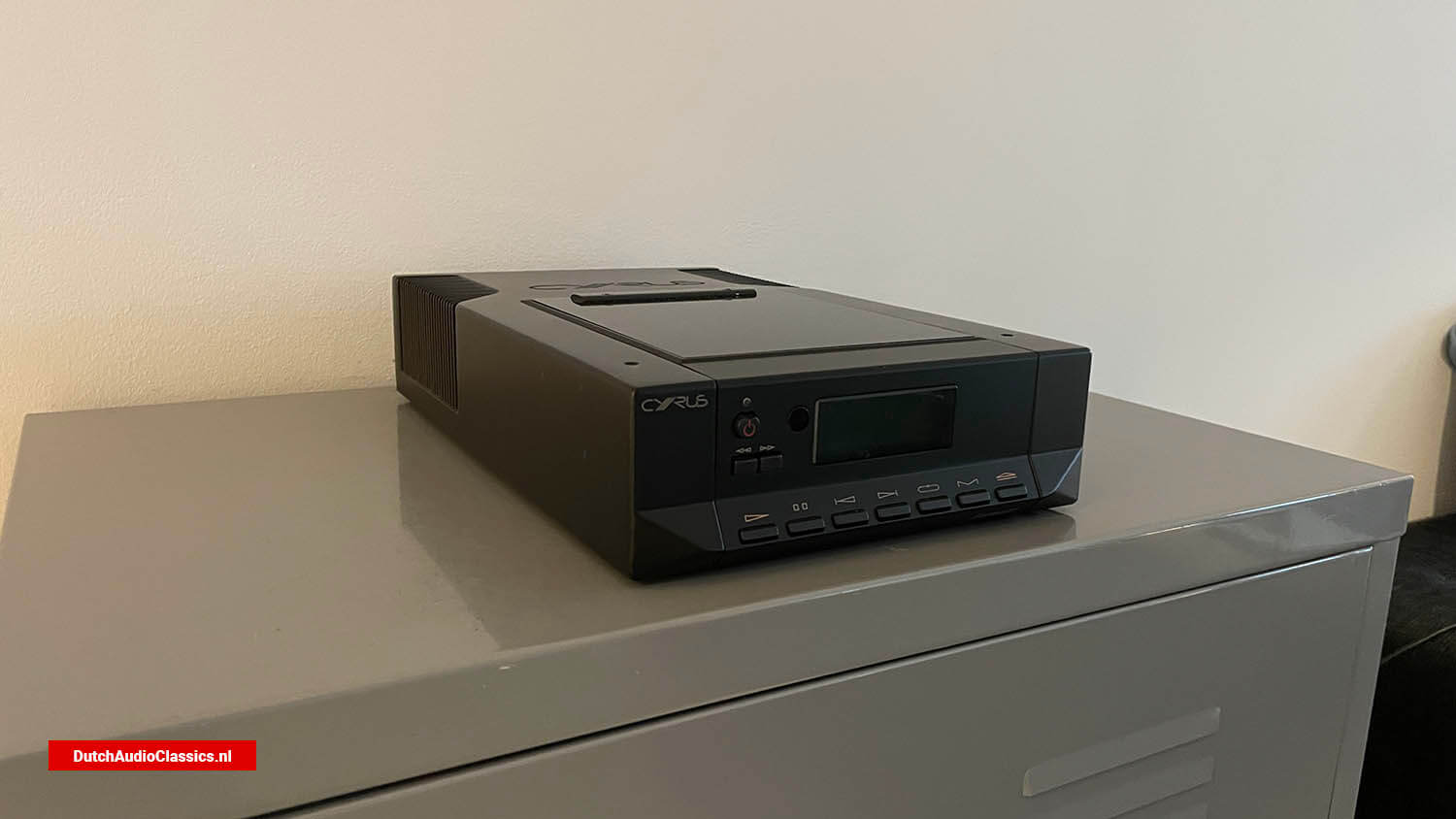
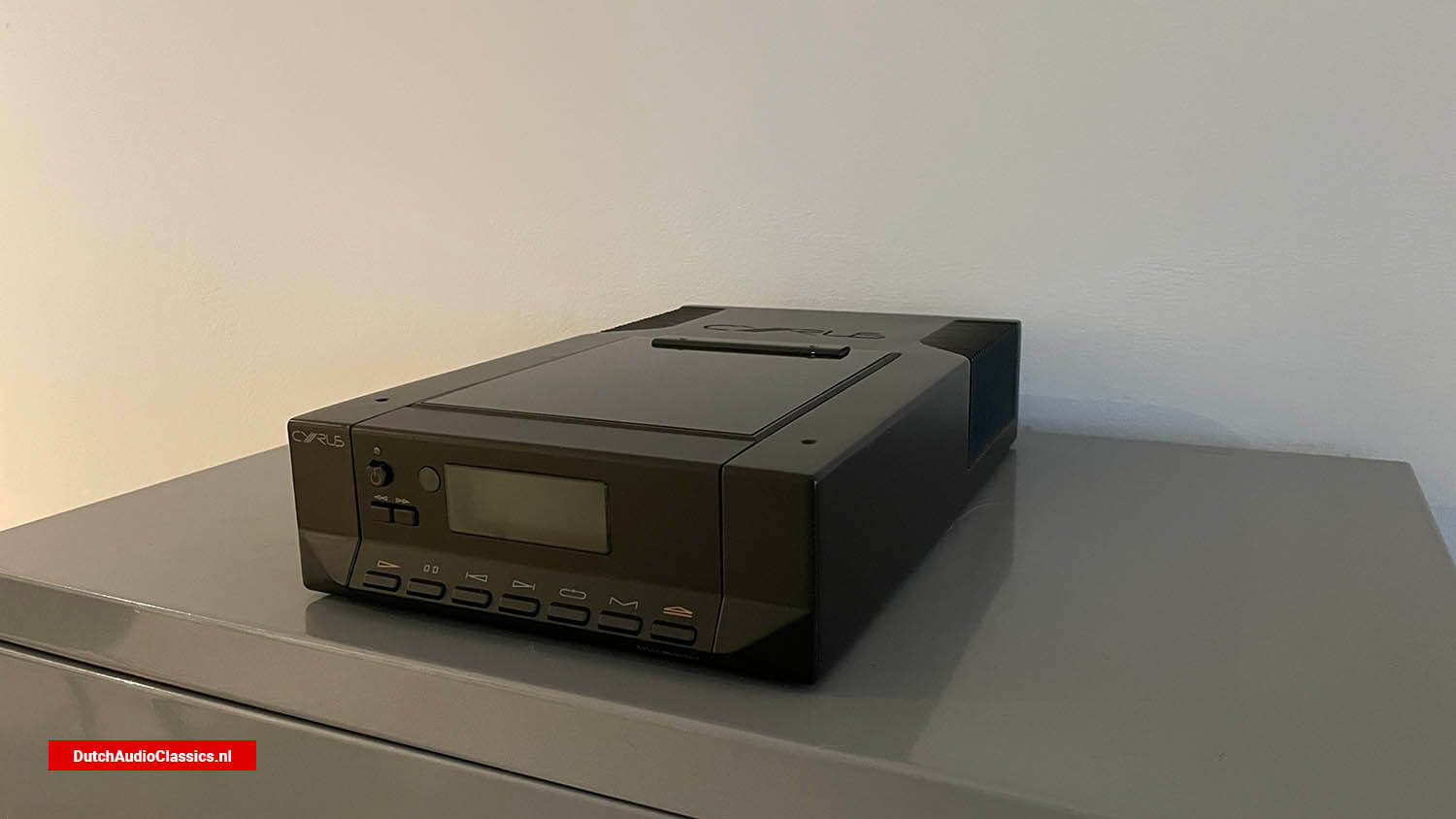
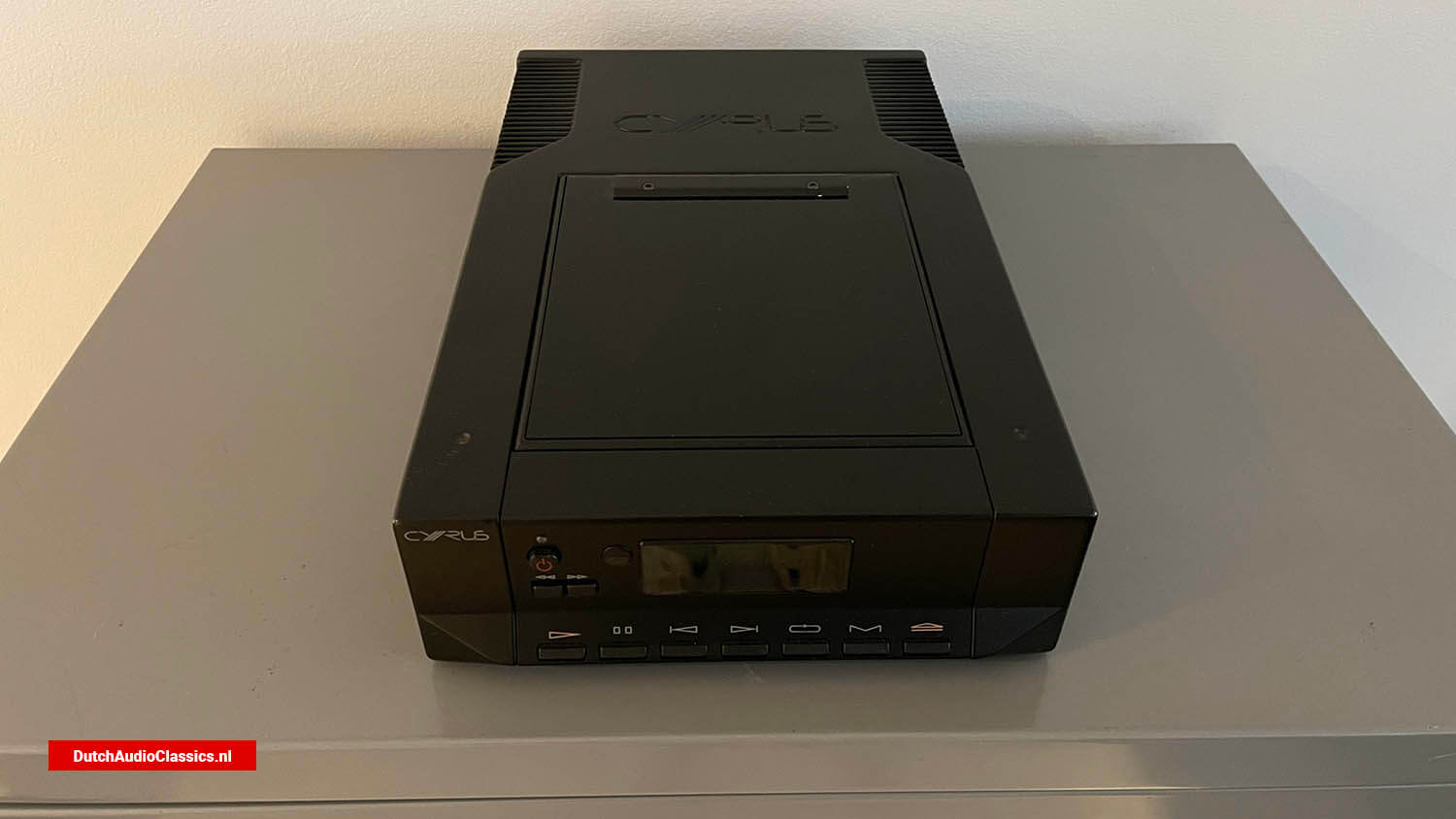
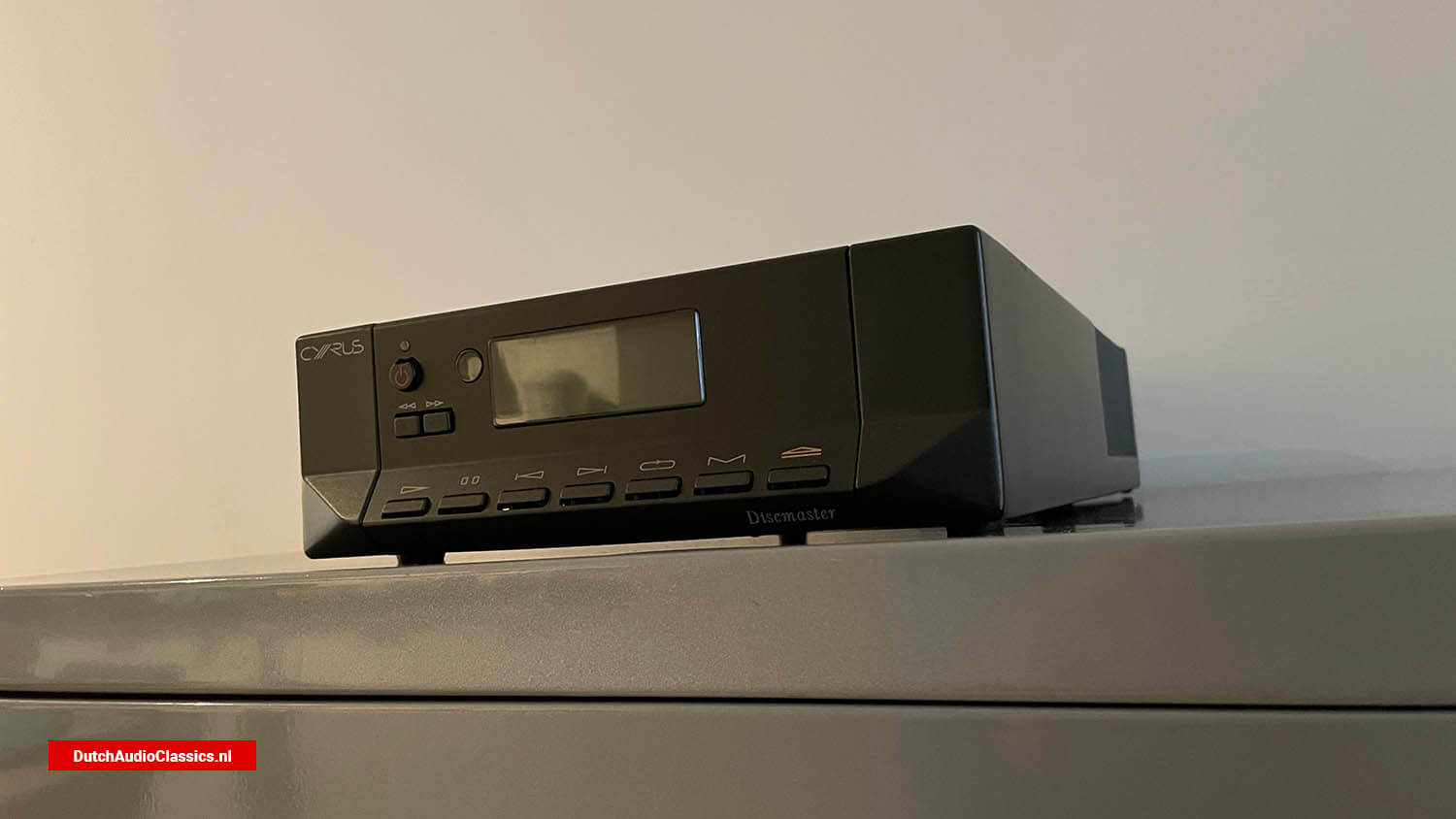
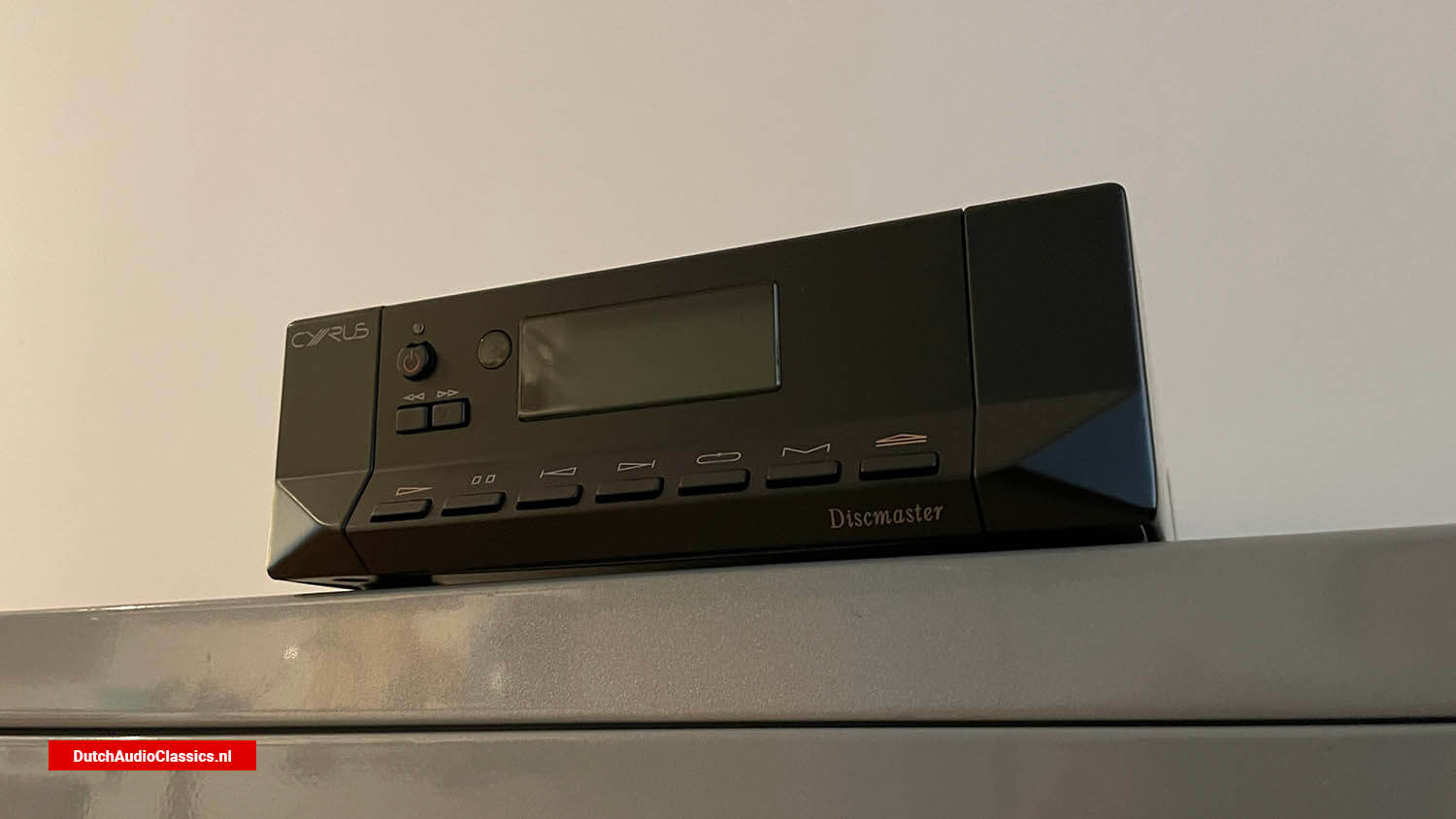
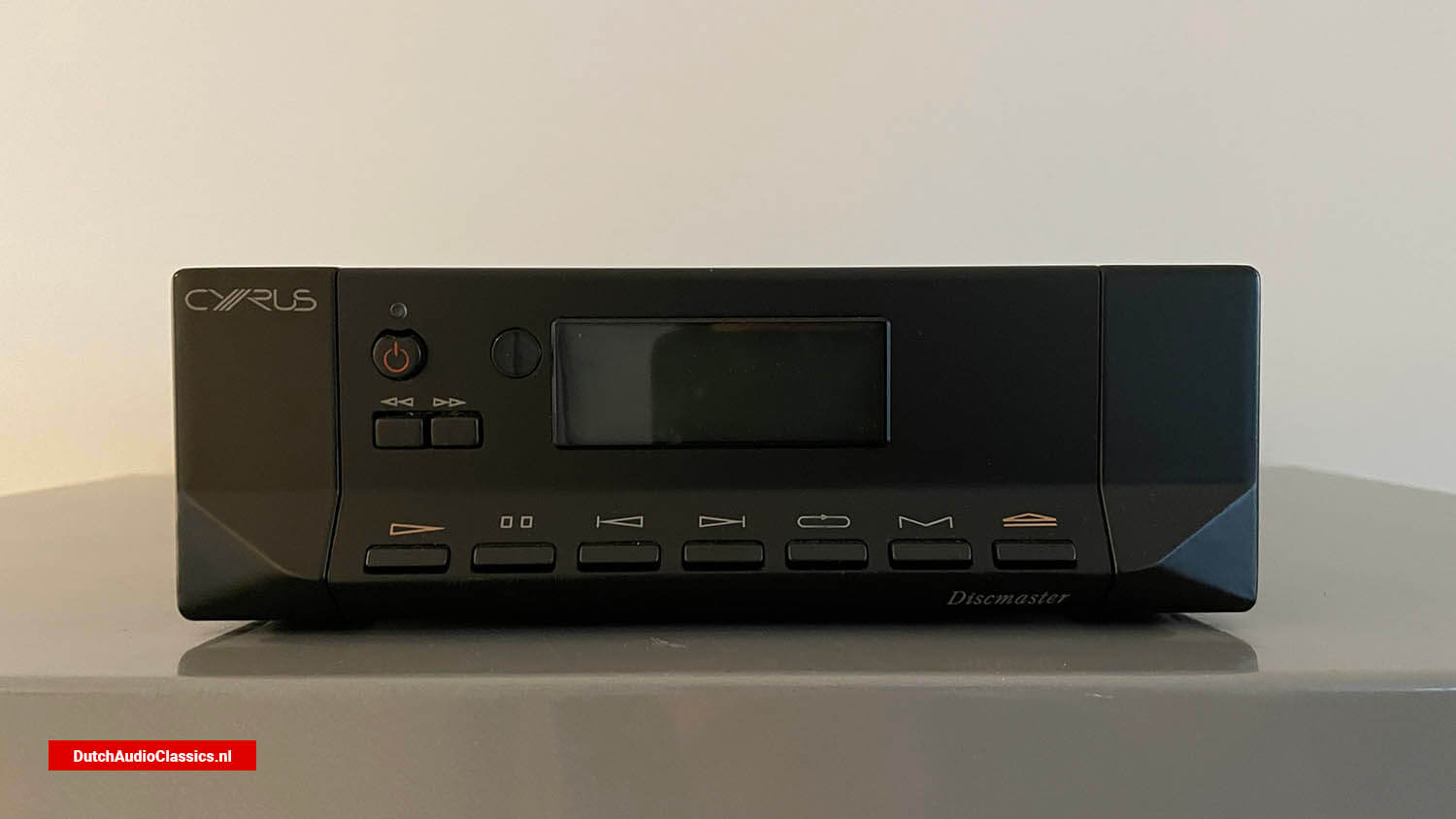

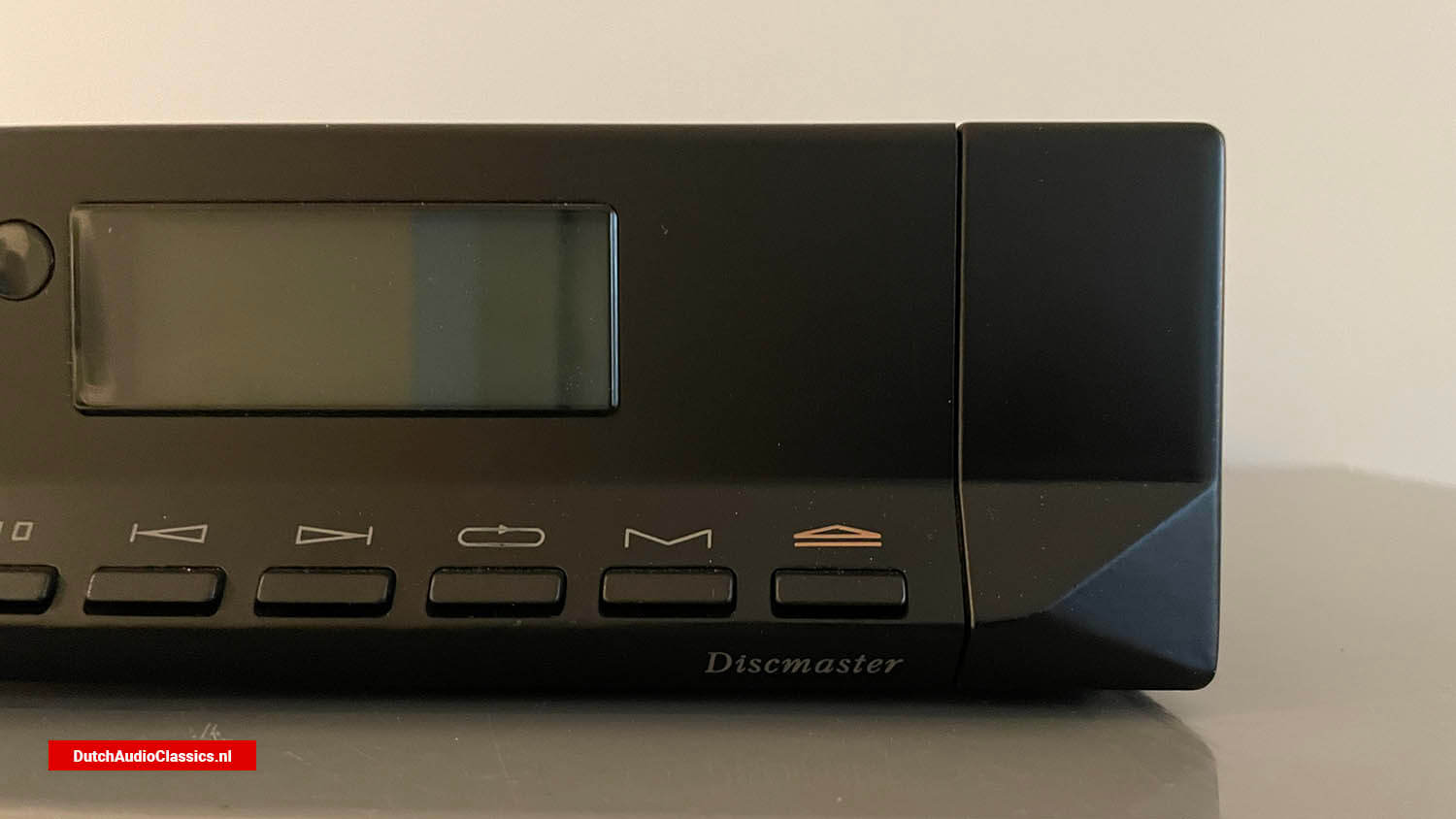
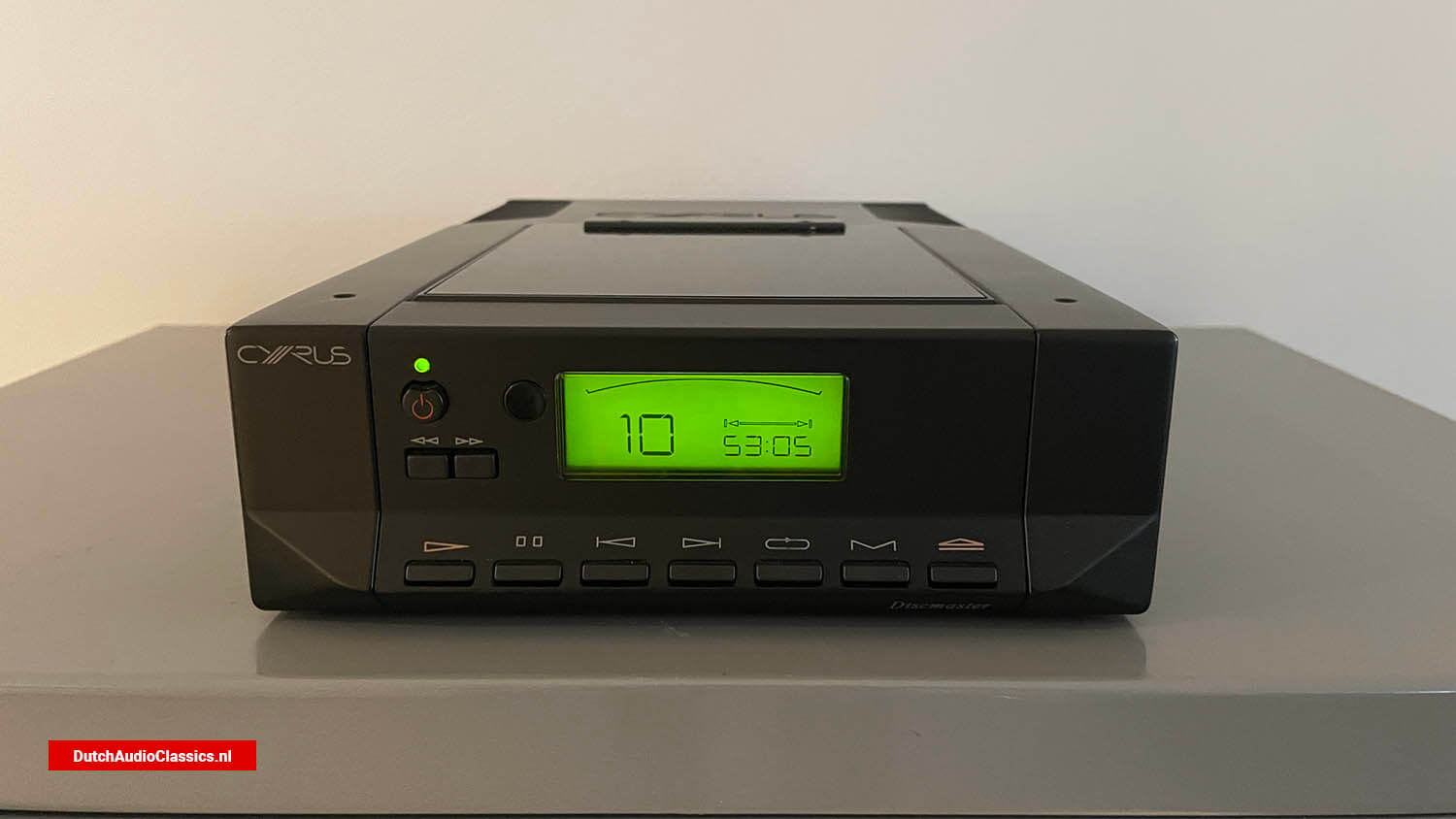
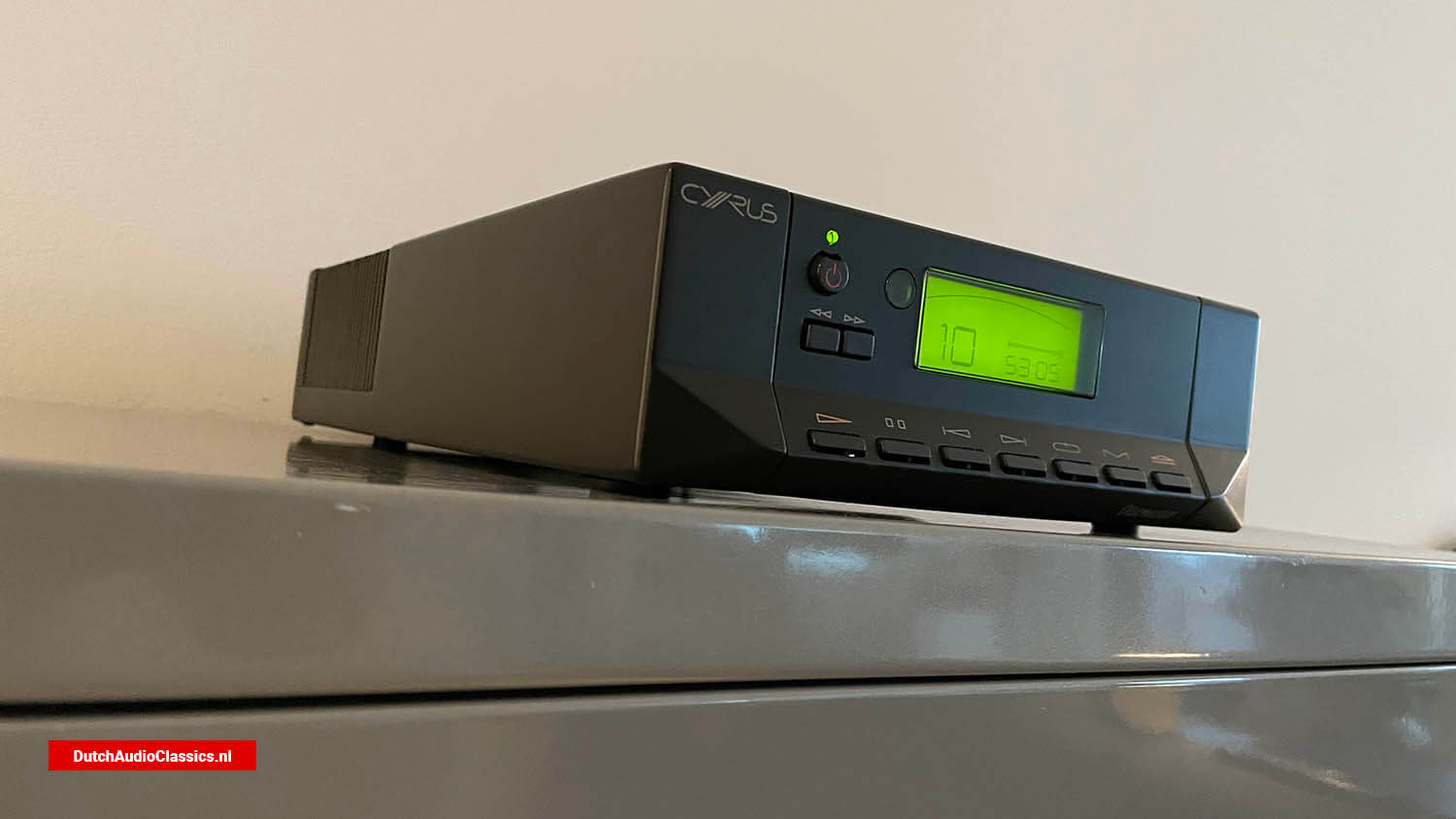

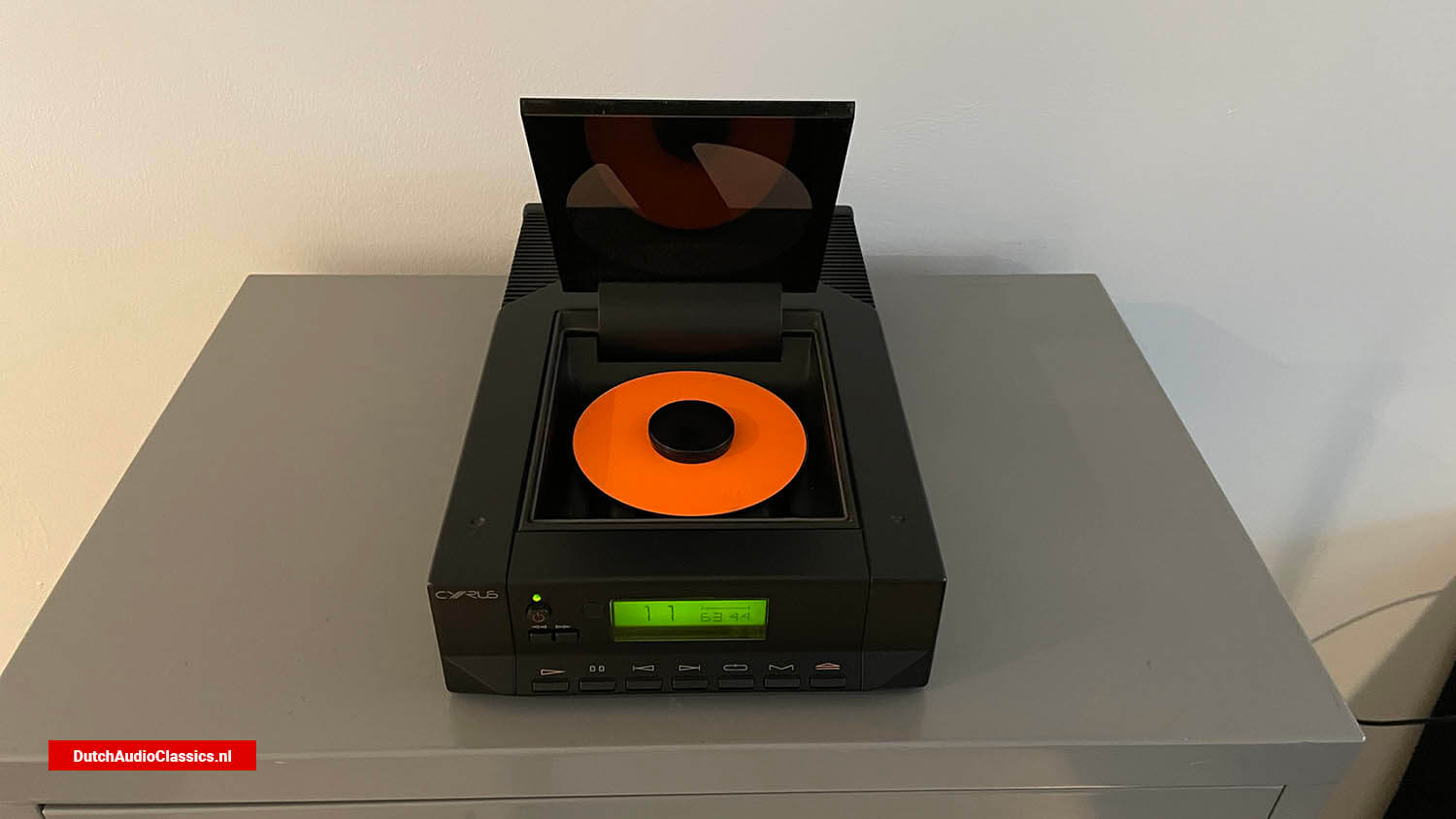



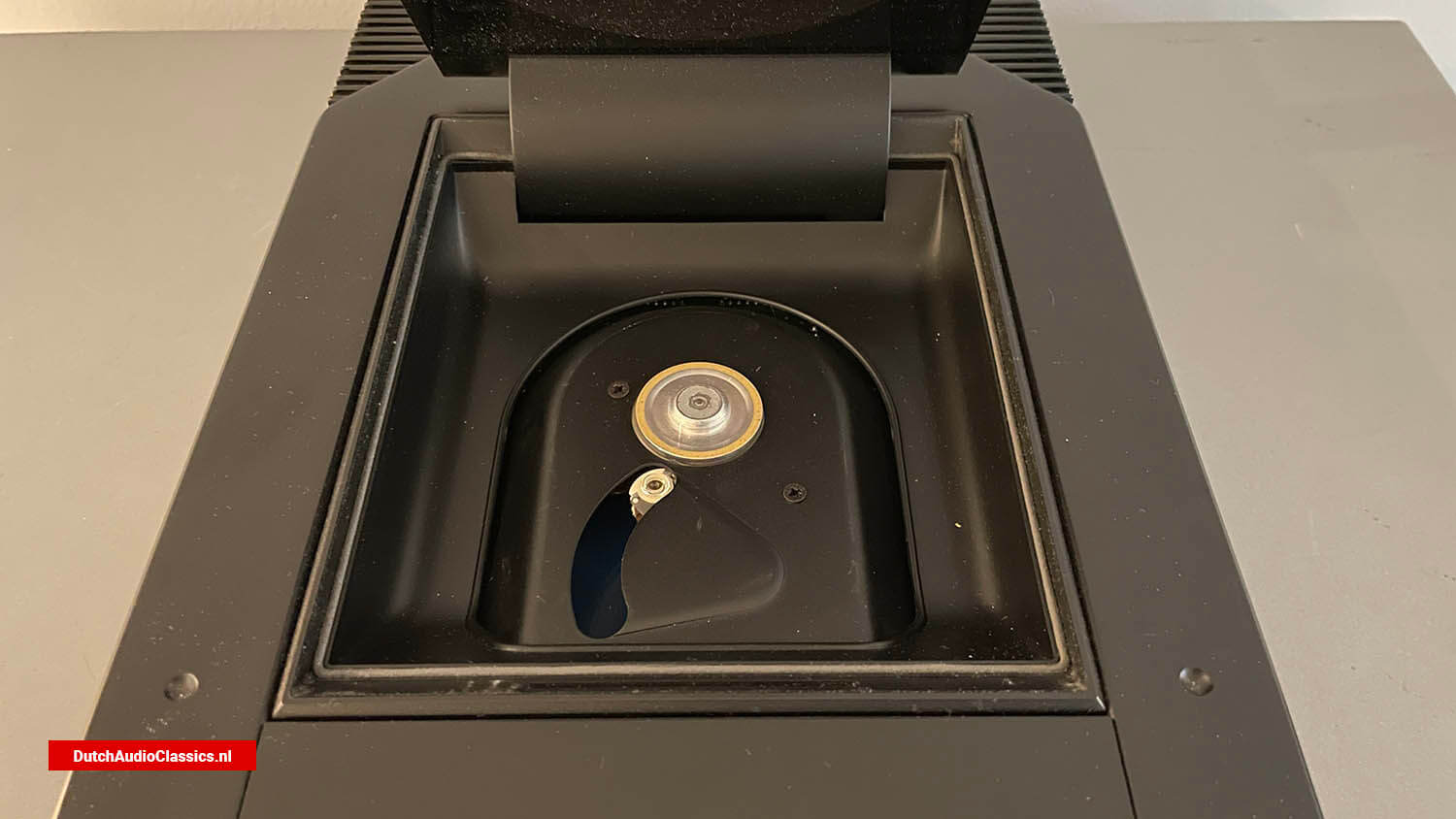

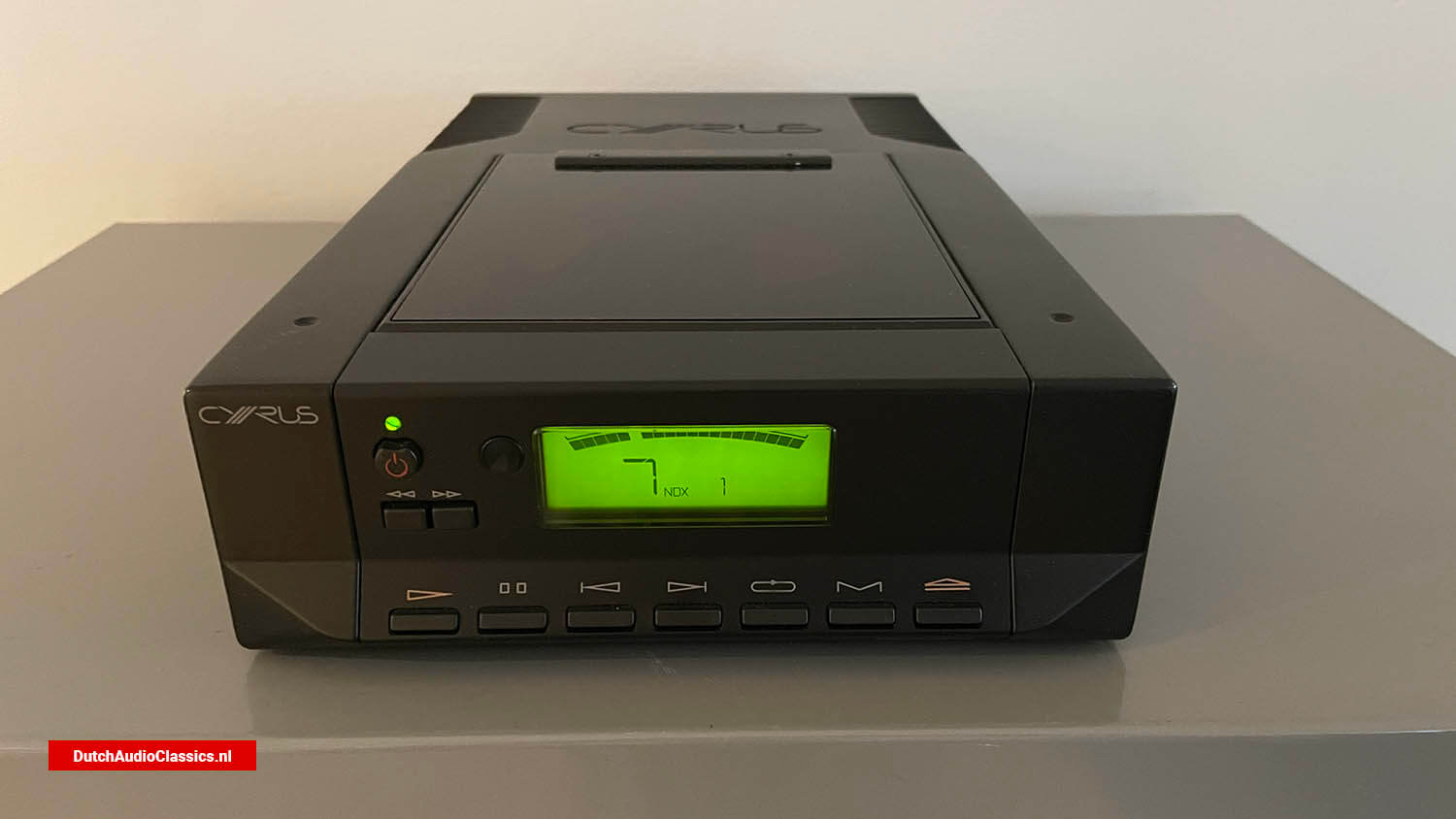
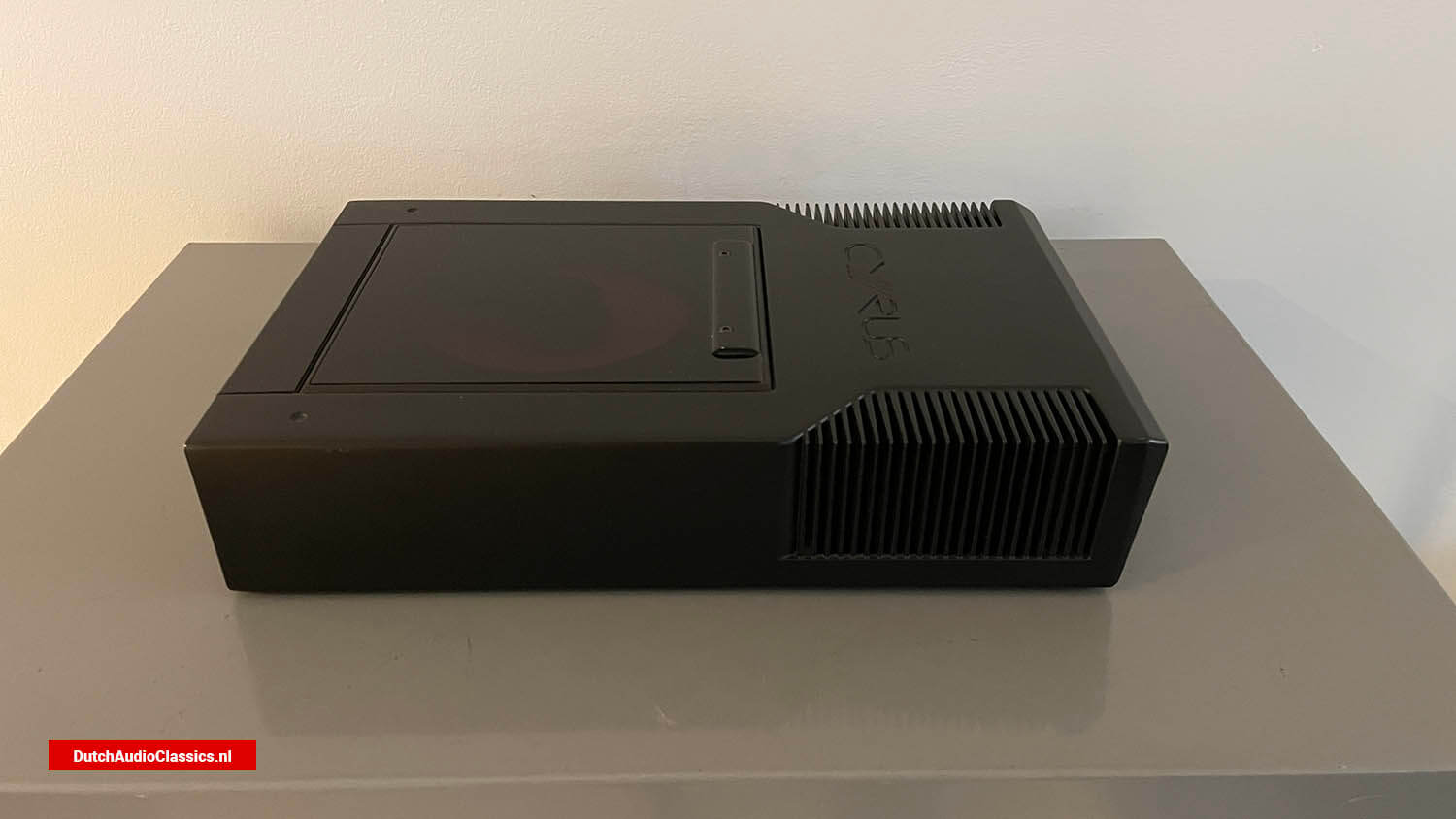
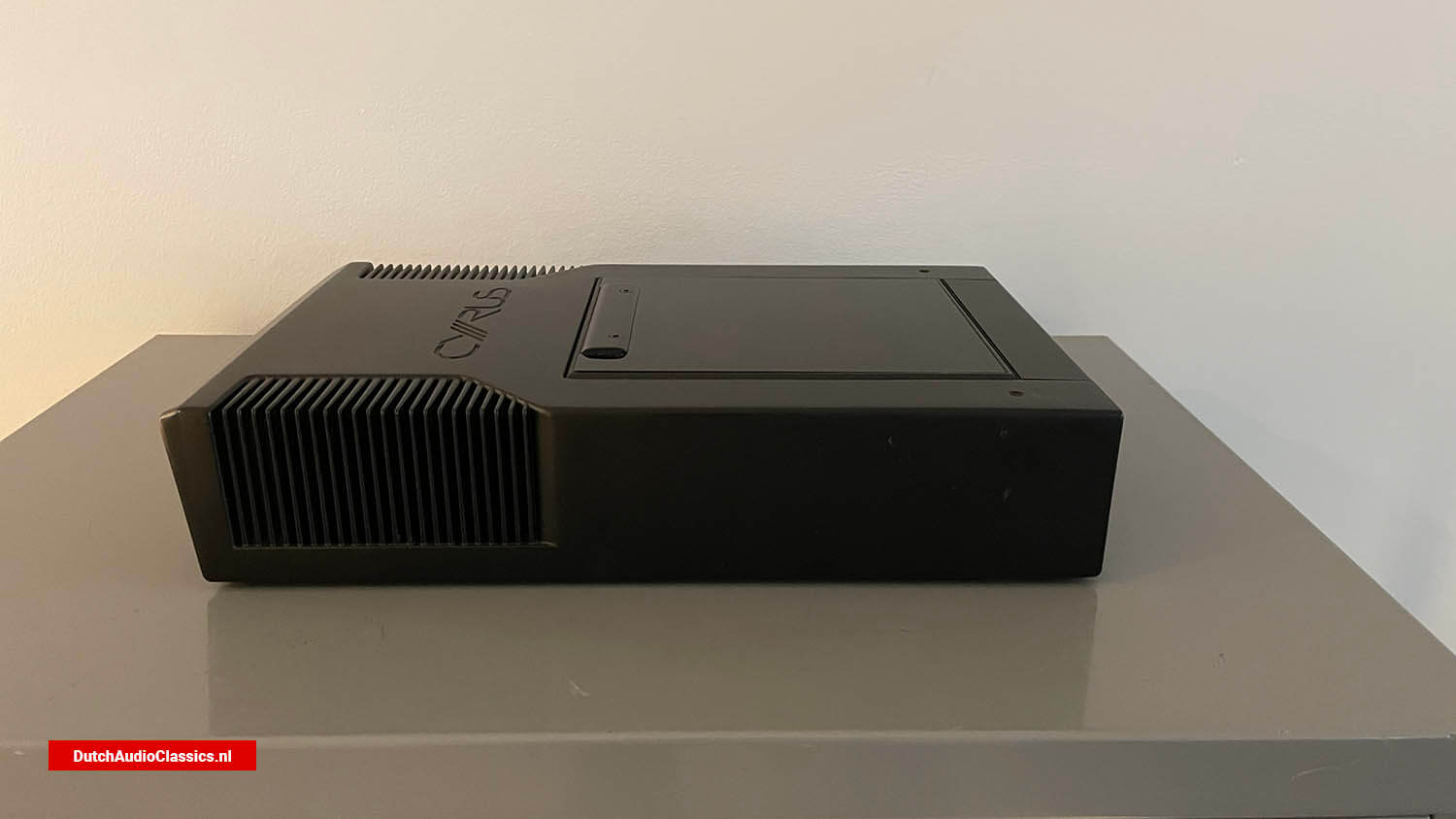
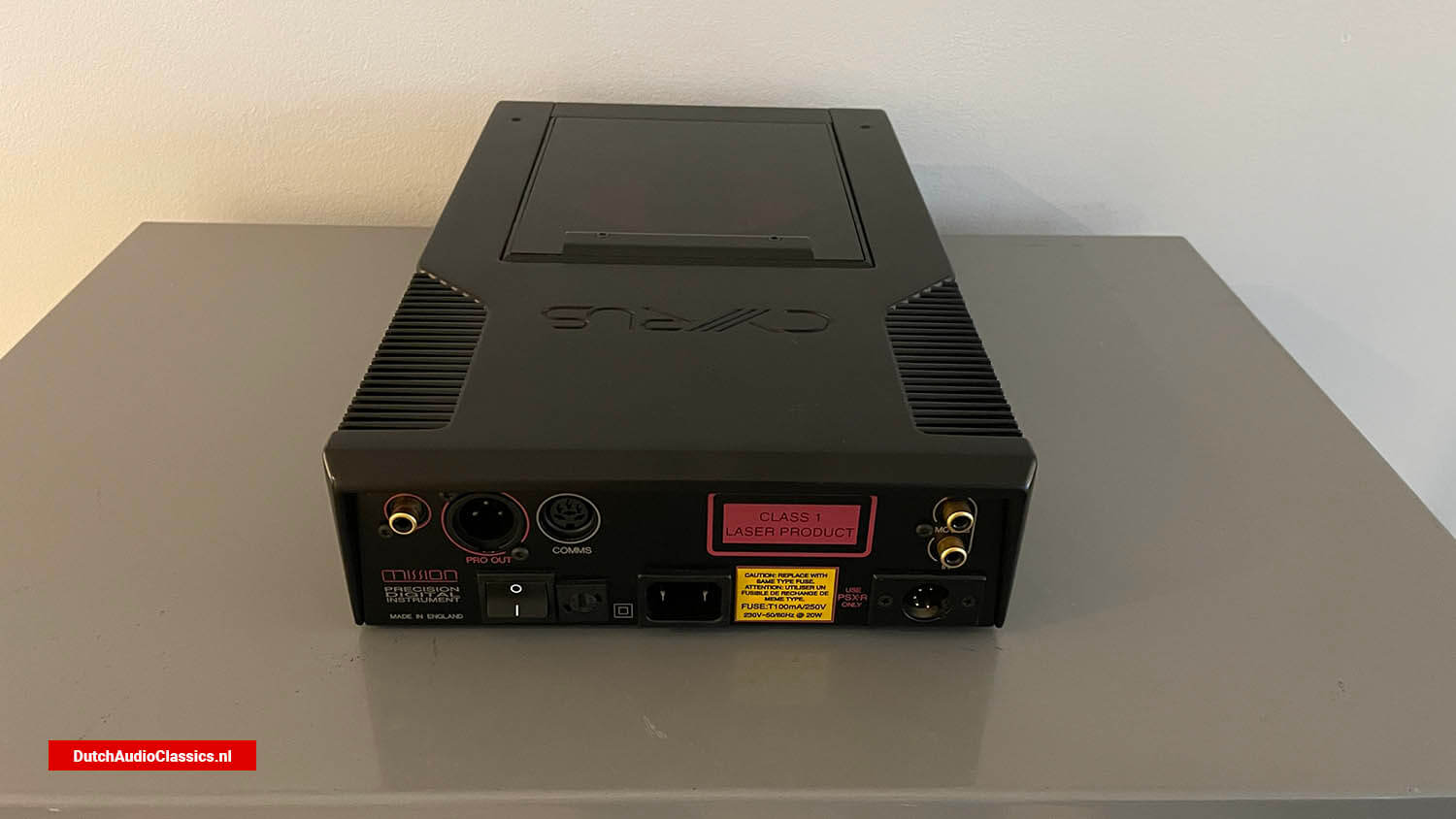

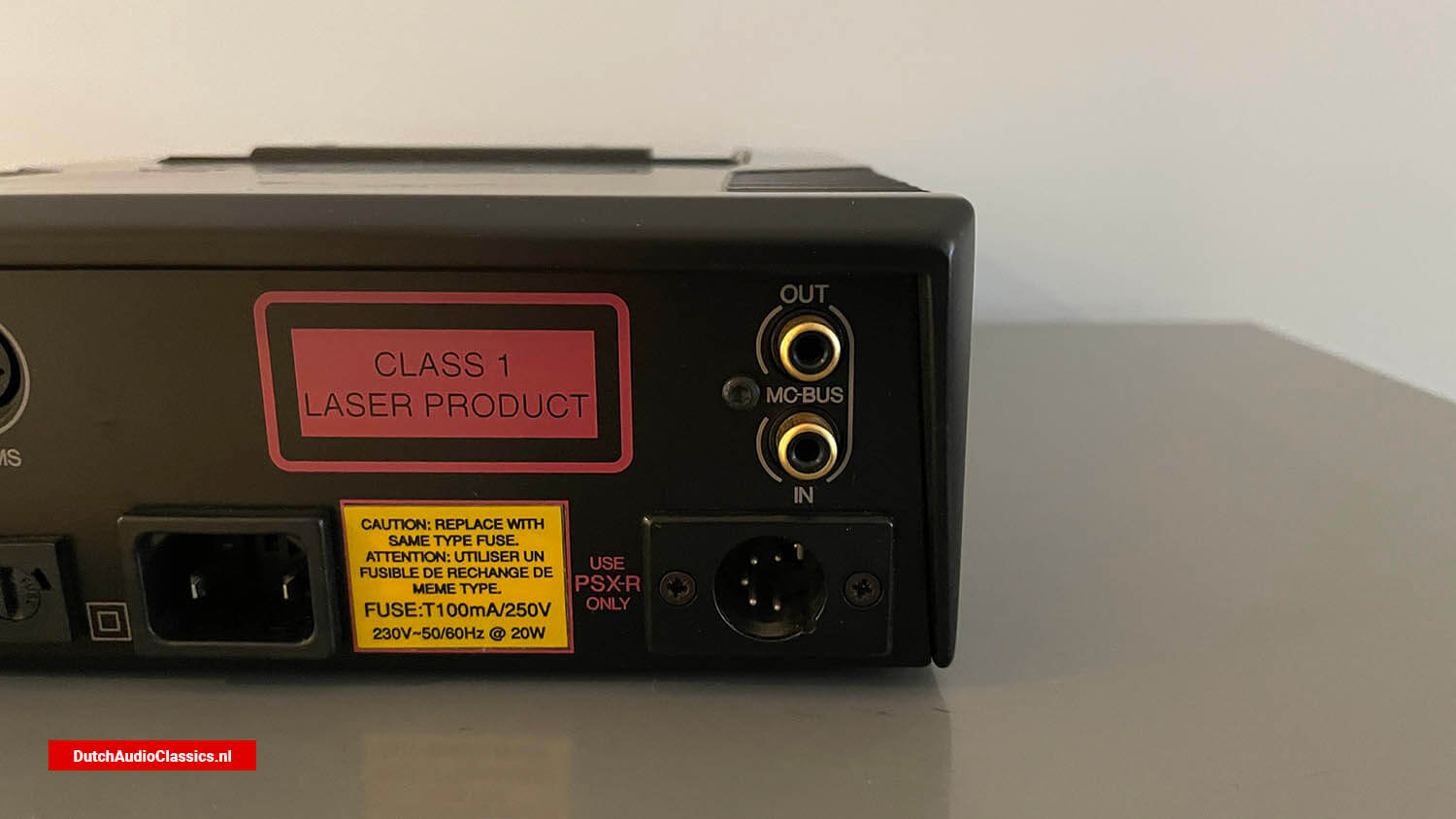
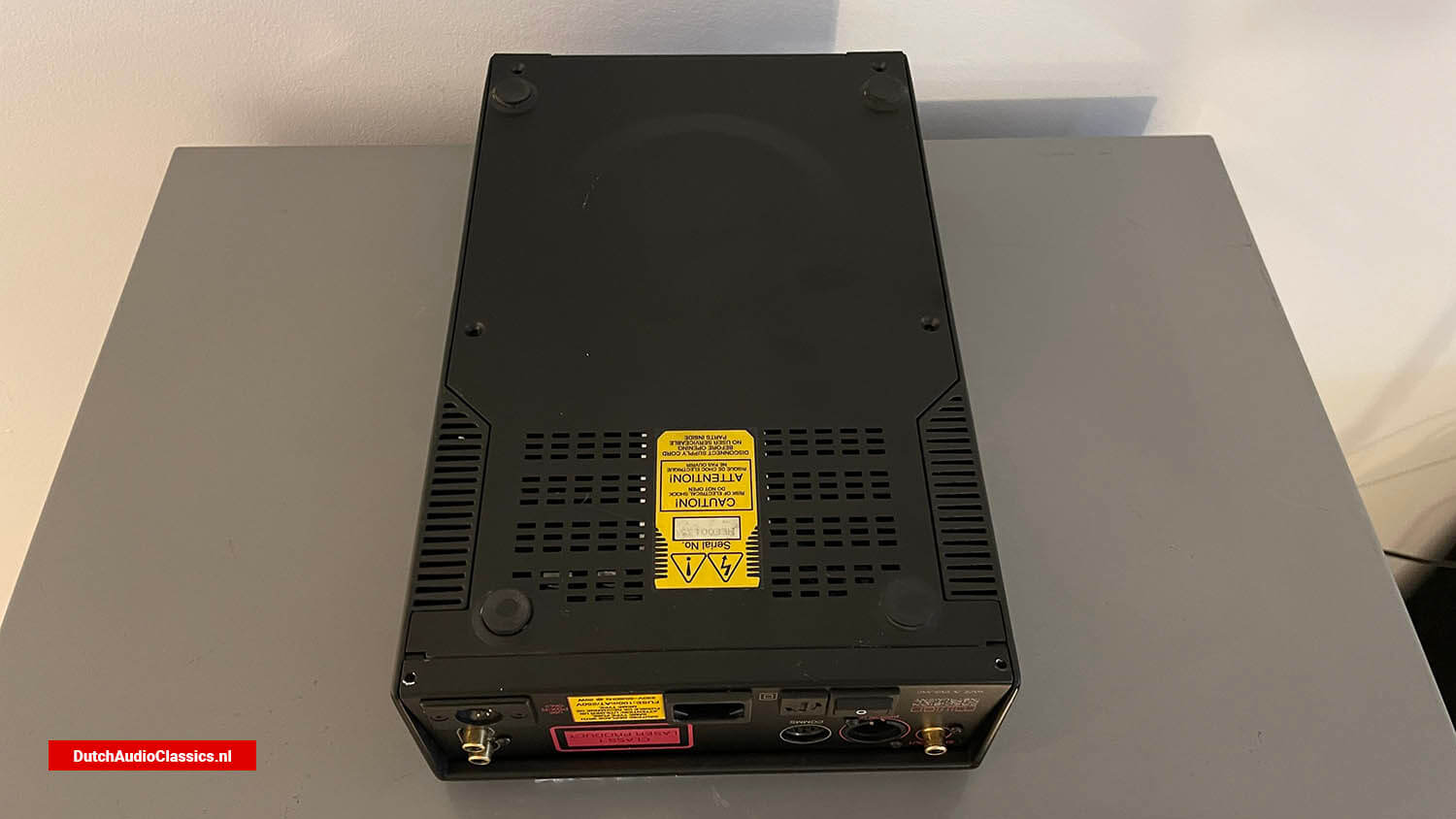
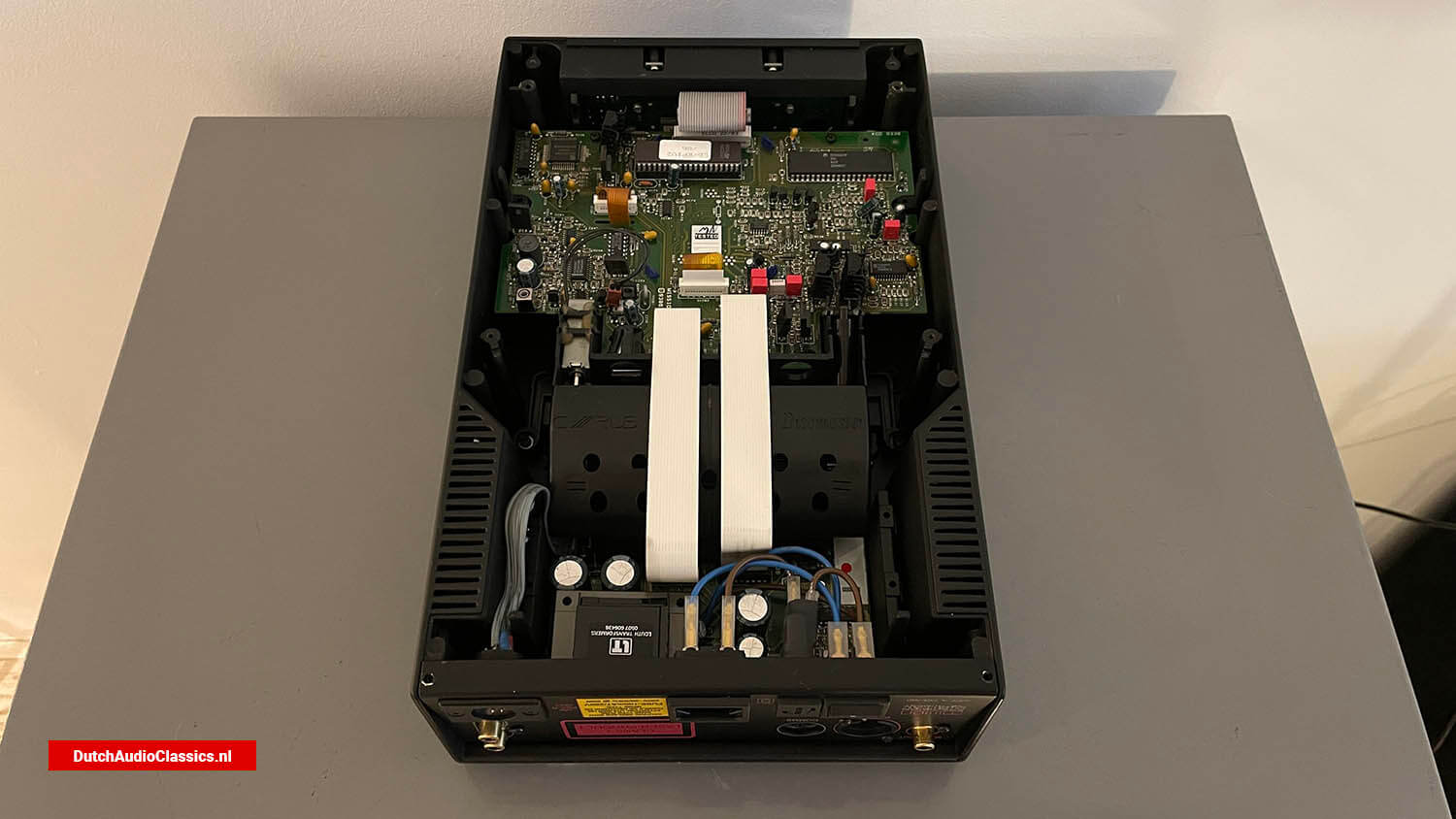
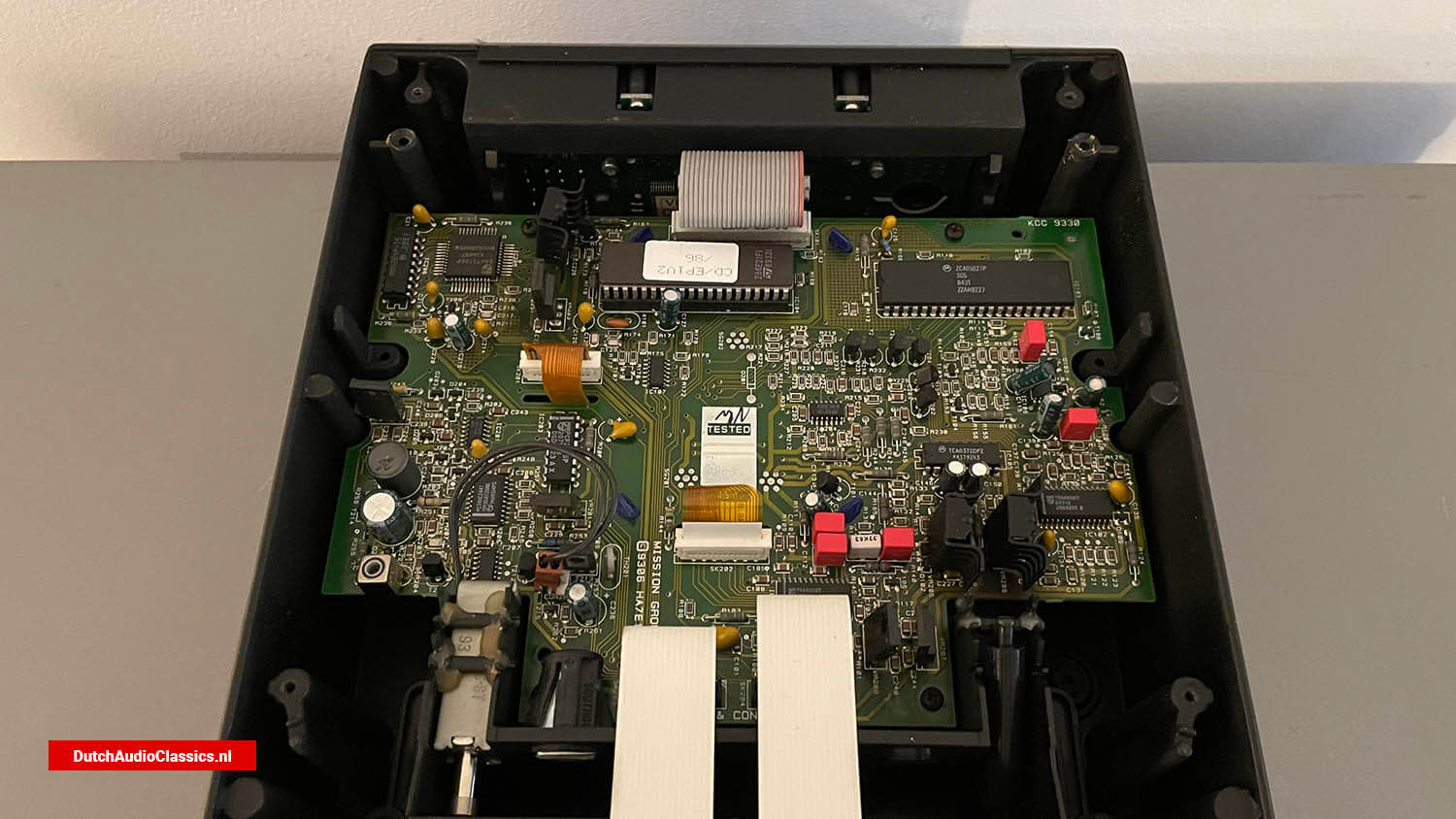

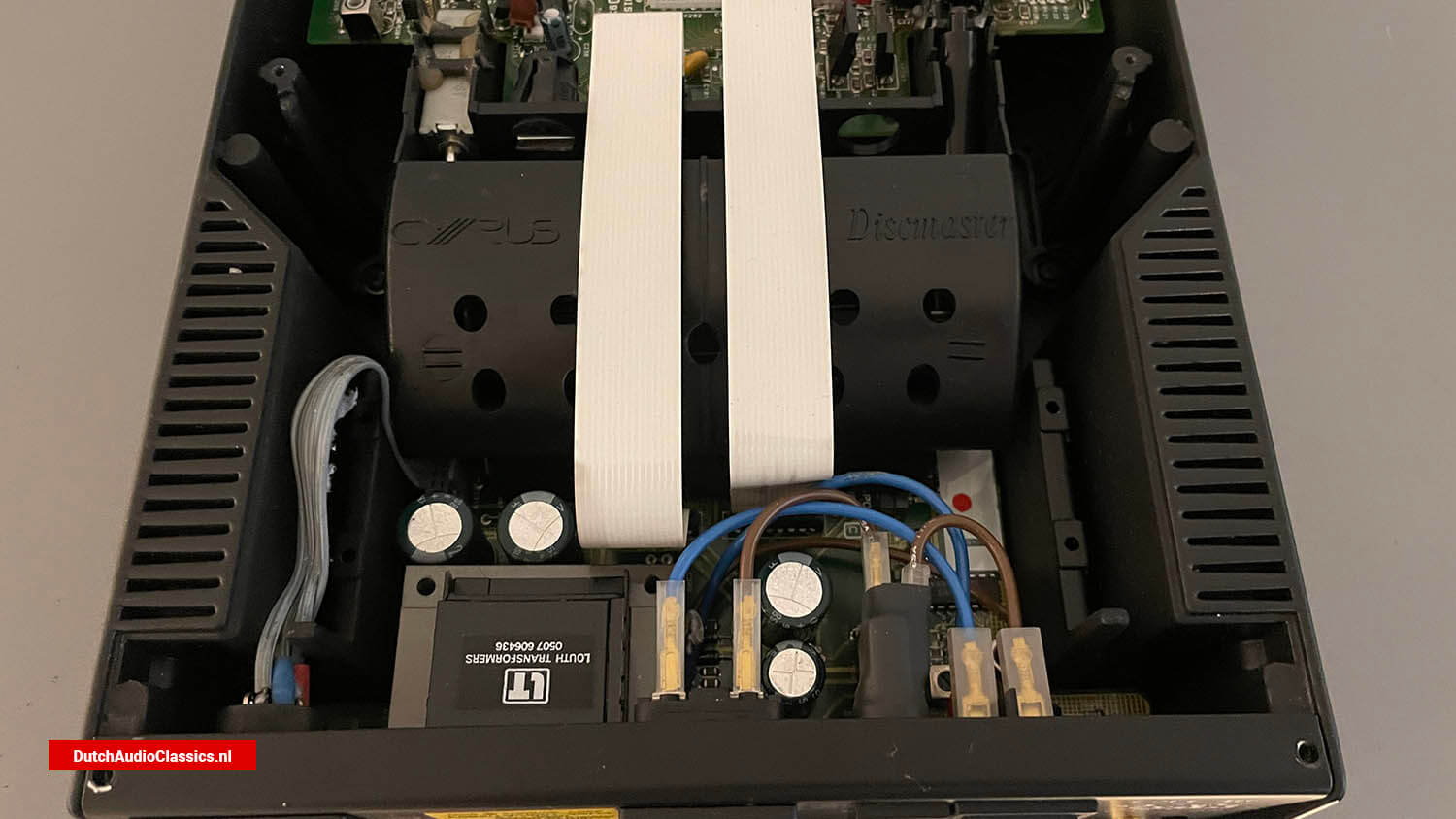
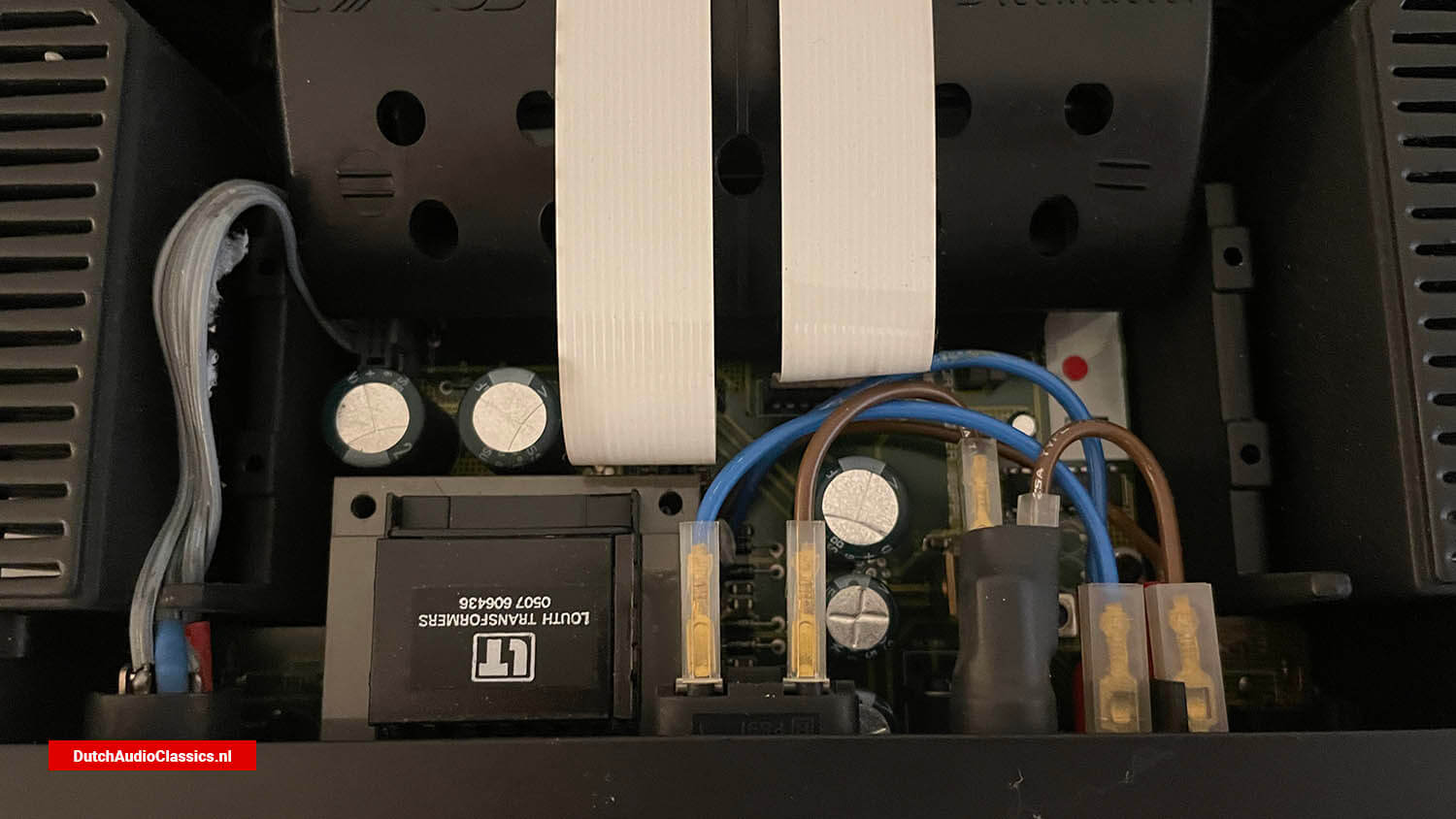
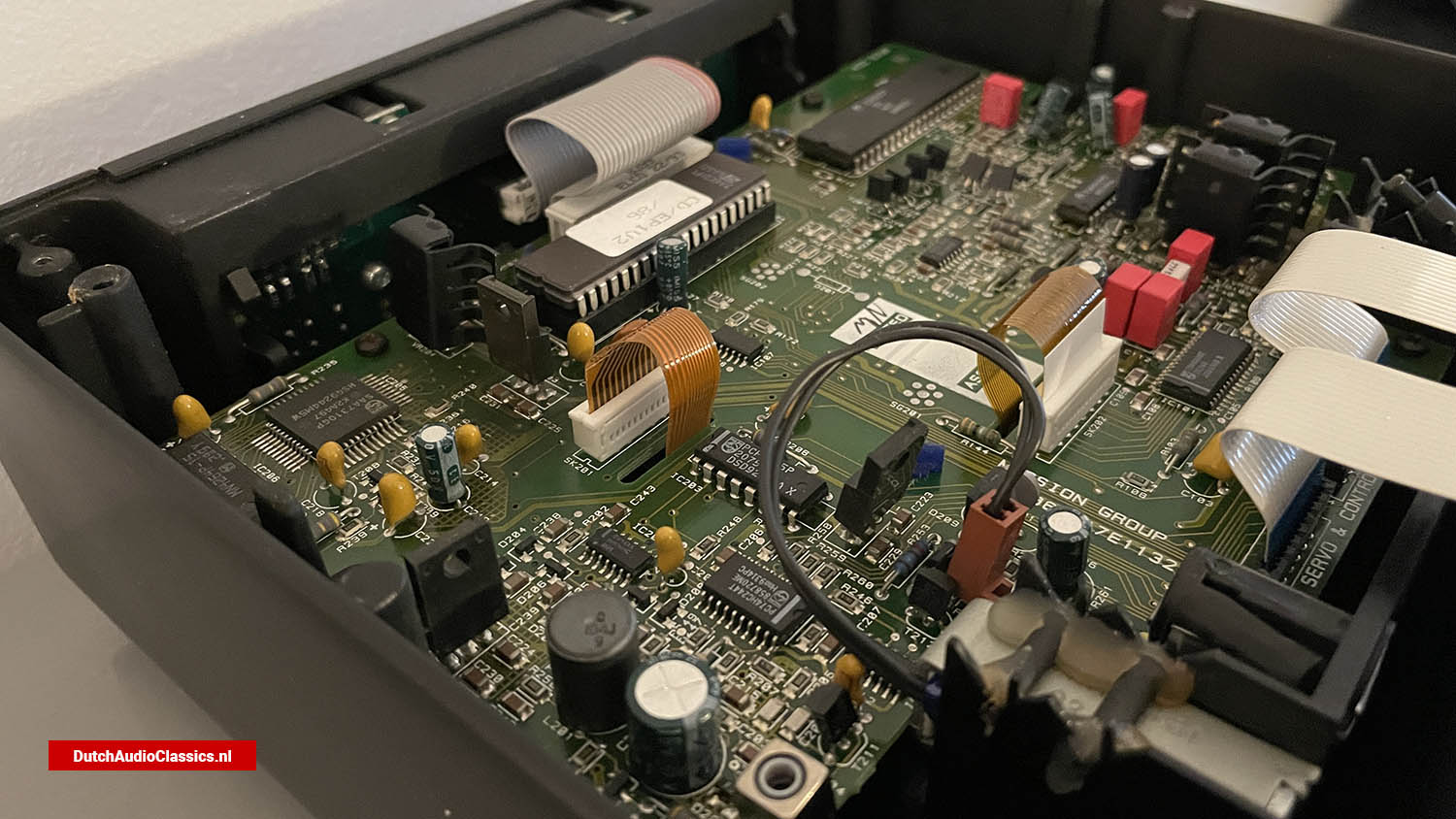
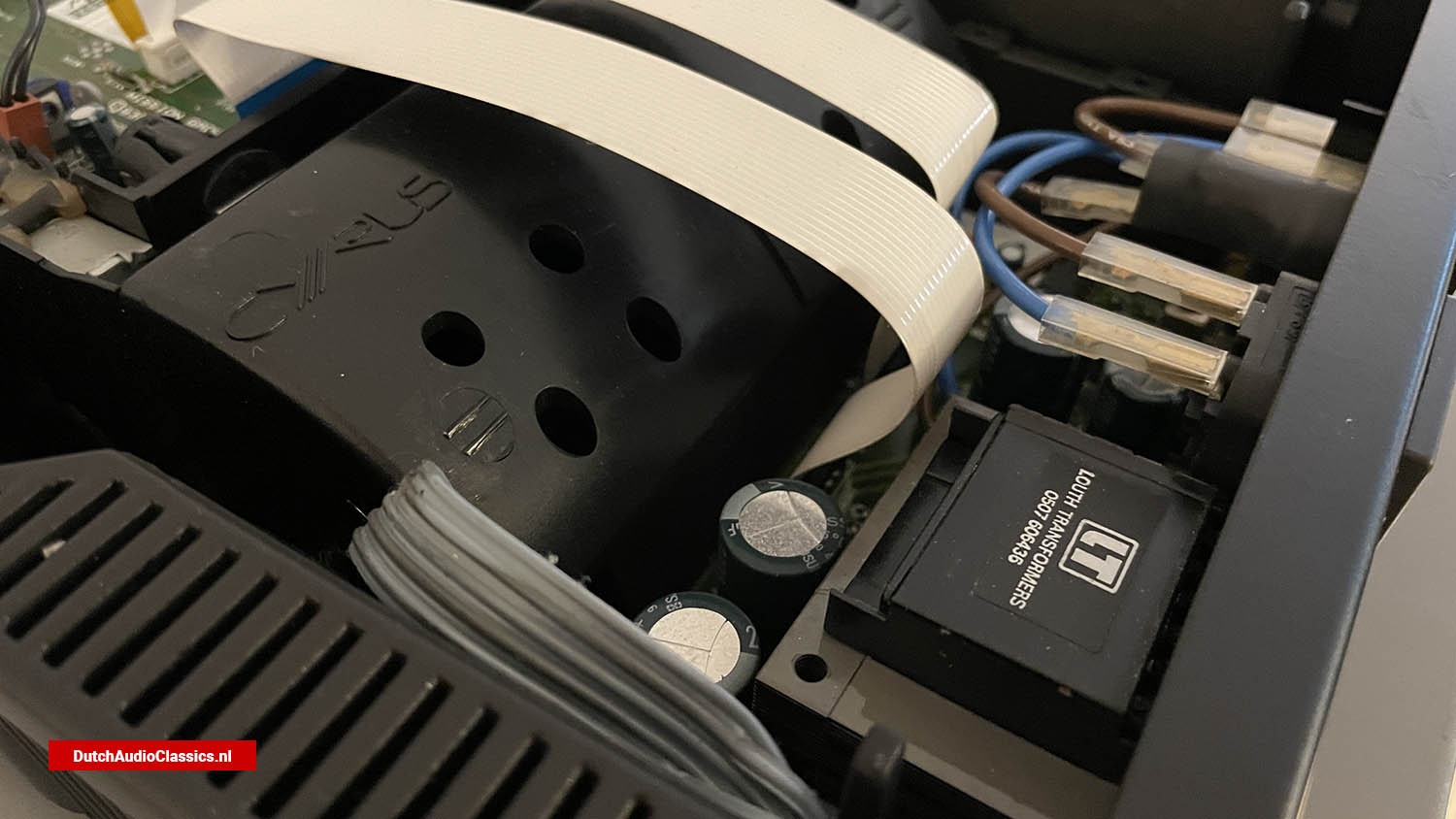 >
>

